
17 Essay Conclusion Examples (Copy and Paste)

Essay conclusions are not just extra filler. They are important because they tie together your arguments, then give you the chance to forcefully drive your point home.
I created the 5 Cs conclusion method to help you write essay conclusions:

I’ve previously produced the video below on how to write a conclusion that goes over the above image.
The video follows the 5 C’s method ( you can read about it in this post ), which doesn’t perfectly match each of the below copy-and-paste conclusion examples, but the principles are similar, and can help you to write your own strong conclusion:
💡 New! Try this AI Prompt to Generate a Sample 5Cs Conclusion This is my essay: [INSERT ESSAY WITHOUT THE CONCLUSION]. I want you to write a conclusion for this essay. In the first sentence of the conclusion, return to a statement I made in the introduction. In the second sentence, reiterate the thesis statement I have used. In the third sentence, clarify how my final position is relevant to the Essay Question, which is [ESSAY QUESTION]. In the fourth sentence, explain who should be interested in my findings. In the fifth sentence, end by noting in one final, engaging sentence why this topic is of such importance.
Remember: The prompt can help you generate samples but you can’t submit AI text for assessment. Make sure you write your conclusion in your own words.
Essay Conclusion Examples
Below is a range of copy-and-paste essay conclusions with gaps for you to fill-in your topic and key arguments. Browse through for one you like (there are 17 for argumentative, expository, compare and contrast, and critical essays). Once you’ve found one you like, copy it and add-in the key points to make it your own.
1. Argumentative Essay Conclusions
The arguments presented in this essay demonstrate the significant importance of _____________. While there are some strong counterarguments, such as ____________, it remains clear that the benefits/merits of _____________ far outweigh the potential downsides. The evidence presented throughout the essay strongly support _____________. In the coming years, _____________ will be increasingly important. Therefore, continual advocacy for the position presented in this essay will be necessary, especially due to its significant implications for _____________.
Version 1 Filled-In
The arguments presented in this essay demonstrate the significant importance of fighting climate change. While there are some strong counterarguments, such as the claim that it is too late to stop catastrophic change, it remains clear that the merits of taking drastic action far outweigh the potential downsides. The evidence presented throughout the essay strongly support the claim that we can at least mitigate the worst effects. In the coming years, intergovernmental worldwide agreements will be increasingly important. Therefore, continual advocacy for the position presented in this essay will be necessary, especially due to its significant implications for humankind.

As this essay has shown, it is clear that the debate surrounding _____________ is multifaceted and highly complex. While there are strong arguments opposing the position that _____________, there remains overwhelming evidence to support the claim that _____________. A careful analysis of the empirical evidence suggests that _____________ not only leads to ____________, but it may also be a necessity for _____________. Moving forward, _____________ should be a priority for all stakeholders involved, as it promises a better future for _____________. The focus should now shift towards how best to integrate _____________ more effectively into society.
Version 2 Filled-In
As this essay has shown, it is clear that the debate surrounding climate change is multifaceted and highly complex. While there are strong arguments opposing the position that we should fight climate change, there remains overwhelming evidence to support the claim that action can mitigate the worst effects. A careful analysis of the empirical evidence suggests that strong action not only leads to better economic outcomes in the long term, but it may also be a necessity for preventing climate-related deaths. Moving forward, carbon emission mitigation should be a priority for all stakeholders involved, as it promises a better future for all. The focus should now shift towards how best to integrate smart climate policies more effectively into society.
Based upon the preponderance of evidence, it is evident that _____________ holds the potential to significantly alter/improve _____________. The counterarguments, while noteworthy, fail to diminish the compelling case for _____________. Following an examination of both sides of the argument, it has become clear that _____________ presents the most effective solution/approach to _____________. Consequently, it is imperative that society acknowledge the value of _____________ for developing a better _____________. Failing to address this topic could lead to negative outcomes, including _____________.
Version 3 Filled-In
Based upon the preponderance of evidence, it is evident that addressing climate change holds the potential to significantly improve the future of society. The counterarguments, while noteworthy, fail to diminish the compelling case for immediate climate action. Following an examination of both sides of the argument, it has become clear that widespread and urgent social action presents the most effective solution to this pressing problem. Consequently, it is imperative that society acknowledge the value of taking immediate action for developing a better environment for future generations. Failing to address this topic could lead to negative outcomes, including more extreme climate events and greater economic externalities.
See Also: Examples of Counterarguments
On the balance of evidence, there is an overwhelming case for _____________. While the counterarguments offer valid points that are worth examining, they do not outweigh or overcome the argument that _____________. An evaluation of both perspectives on this topic concludes that _____________ is the most sufficient option for _____________. The implications of embracing _____________ do not only have immediate benefits, but they also pave the way for a more _____________. Therefore, the solution of _____________ should be actively pursued by _____________.
Version 4 Filled-In
On the balance of evidence, there is an overwhelming case for immediate tax-based action to mitigate the effects of climate change. While the counterarguments offer valid points that are worth examining, they do not outweigh or overcome the argument that action is urgently necessary. An evaluation of both perspectives on this topic concludes that taking societal-wide action is the most sufficient option for achieving the best results. The implications of embracing a society-wide approach like a carbon tax do not only have immediate benefits, but they also pave the way for a more healthy future. Therefore, the solution of a carbon tax or equivalent policy should be actively pursued by governments.
2. Expository Essay Conclusions
Overall, it is evident that _____________ plays a crucial role in _____________. The analysis presented in this essay demonstrates the clear impact of _____________ on _____________. By understanding the key facts about _____________, practitioners/society are better equipped to navigate _____________. Moving forward, further exploration of _____________ will yield additional insights and information about _____________. As such, _____________ should remain a focal point for further discussions and studies on _____________.
Overall, it is evident that social media plays a crucial role in harming teenagers’ mental health. The analysis presented in this essay demonstrates the clear impact of social media on young people. By understanding the key facts about the ways social media cause young people to experience body dysmorphia, teachers and parents are better equipped to help young people navigate online spaces. Moving forward, further exploration of the ways social media cause harm will yield additional insights and information about how it can be more sufficiently regulated. As such, the effects of social media on youth should remain a focal point for further discussions and studies on youth mental health.
To conclude, this essay has explored the multi-faceted aspects of _____________. Through a careful examination of _____________, this essay has illuminated its significant influence on _____________. This understanding allows society to appreciate the idea that _____________. As research continues to emerge, the importance of _____________ will only continue to grow. Therefore, an understanding of _____________ is not merely desirable, but imperative for _____________.
To conclude, this essay has explored the multi-faceted aspects of globalization. Through a careful examination of globalization, this essay has illuminated its significant influence on the economy, cultures, and society. This understanding allows society to appreciate the idea that globalization has both positive and negative effects. As research continues to emerge, the importance of studying globalization will only continue to grow. Therefore, an understanding of globalization’s effects is not merely desirable, but imperative for judging whether it is good or bad.
Reflecting on the discussion, it is clear that _____________ serves a pivotal role in _____________. By delving into the intricacies of _____________, we have gained valuable insights into its impact and significance. This knowledge will undoubtedly serve as a guiding principle in _____________. Moving forward, it is paramount to remain open to further explorations and studies on _____________. In this way, our understanding and appreciation of _____________ can only deepen and expand.
Reflecting on the discussion, it is clear that mass media serves a pivotal role in shaping public opinion. By delving into the intricacies of mass media, we have gained valuable insights into its impact and significance. This knowledge will undoubtedly serve as a guiding principle in shaping the media landscape. Moving forward, it is paramount to remain open to further explorations and studies on how mass media impacts society. In this way, our understanding and appreciation of mass media’s impacts can only deepen and expand.
In conclusion, this essay has shed light on the importance of _____________ in the context of _____________. The evidence and analysis provided underscore the profound effect _____________ has on _____________. The knowledge gained from exploring _____________ will undoubtedly contribute to more informed and effective decisions in _____________. As we continue to progress, the significance of understanding _____________ will remain paramount. Hence, we should strive to deepen our knowledge of _____________ to better navigate and influence _____________.
In conclusion, this essay has shed light on the importance of bedside manner in the context of nursing. The evidence and analysis provided underscore the profound effect compassionate bedside manner has on patient outcome. The knowledge gained from exploring nurses’ bedside manner will undoubtedly contribute to more informed and effective decisions in nursing practice. As we continue to progress, the significance of understanding nurses’ bedside manner will remain paramount. Hence, we should strive to deepen our knowledge of this topic to better navigate and influence patient outcomes.
See More: How to Write an Expository Essay
3. Compare and Contrast Essay Conclusion
While both _____________ and _____________ have similarities such as _____________, they also have some very important differences in areas like _____________. Through this comparative analysis, a broader understanding of _____________ and _____________ has been attained. The choice between the two will largely depend on _____________. For example, as highlighted in the essay, ____________. Despite their differences, both _____________ and _____________ have value in different situations.
While both macrosociology and microsociology have similarities such as their foci on how society is structured, they also have some very important differences in areas like their differing approaches to research methodologies. Through this comparative analysis, a broader understanding of macrosociology and microsociology has been attained. The choice between the two will largely depend on the researcher’s perspective on how society works. For example, as highlighted in the essay, microsociology is much more concerned with individuals’ experiences while macrosociology is more concerned with social structures. Despite their differences, both macrosociology and microsociology have value in different situations.
It is clear that _____________ and _____________, while seeming to be different, have shared characteristics in _____________. On the other hand, their contrasts in _____________ shed light on their unique features. The analysis provides a more nuanced comprehension of these subjects. In choosing between the two, consideration should be given to _____________. Despite their disparities, it’s crucial to acknowledge the importance of both when it comes to _____________.
It is clear that behaviorism and consructivism, while seeming to be different, have shared characteristics in their foci on knowledge acquisition over time. On the other hand, their contrasts in ideas about the role of experience in learning shed light on their unique features. The analysis provides a more nuanced comprehension of these subjects. In choosing between the two, consideration should be given to which approach works best in which situation. Despite their disparities, it’s crucial to acknowledge the importance of both when it comes to student education.
Reflecting on the points discussed, it’s evident that _____________ and _____________ share similarities such as _____________, while also demonstrating unique differences, particularly in _____________. The preference for one over the other would typically depend on factors such as _____________. Yet, regardless of their distinctions, both _____________ and _____________ play integral roles in their respective areas, significantly contributing to _____________.
Reflecting on the points discussed, it’s evident that red and orange share similarities such as the fact they are both ‘hot colors’, while also demonstrating unique differences, particularly in their social meaning (red meaning danger and orange warmth). The preference for one over the other would typically depend on factors such as personal taste. Yet, regardless of their distinctions, both red and orange play integral roles in their respective areas, significantly contributing to color theory.
Ultimately, the comparison and contrast of _____________ and _____________ have revealed intriguing similarities and notable differences. Differences such as _____________ give deeper insights into their unique and shared qualities. When it comes to choosing between them, _____________ will likely be a deciding factor. Despite these differences, it is important to remember that both _____________ and _____________ hold significant value within the context of _____________, and each contributes to _____________ in its own unique way.
Ultimately, the comparison and contrast of driving and flying have revealed intriguing similarities and notable differences. Differences such as their differing speed to destination give deeper insights into their unique and shared qualities. When it comes to choosing between them, urgency to arrive at the destination will likely be a deciding factor. Despite these differences, it is important to remember that both driving and flying hold significant value within the context of air transit, and each contributes to facilitating movement in its own unique way.
See Here for More Compare and Contrast Essay Examples
4. Critical Essay Conclusion
In conclusion, the analysis of _____________ has unveiled critical aspects related to _____________. While there are strengths in _____________, its limitations are equally telling. This critique provides a more informed perspective on _____________, revealing that there is much more beneath the surface. Moving forward, the understanding of _____________ should evolve, considering both its merits and flaws.
In conclusion, the analysis of flow theory has unveiled critical aspects related to motivation and focus. While there are strengths in achieving a flow state, its limitations are equally telling. This critique provides a more informed perspective on how humans achieve motivation, revealing that there is much more beneath the surface. Moving forward, the understanding of flow theory of motivation should evolve, considering both its merits and flaws.
To conclude, this critical examination of _____________ sheds light on its multi-dimensional nature. While _____________ presents notable advantages, it is not without its drawbacks. This in-depth critique offers a comprehensive understanding of _____________. Therefore, future engagements with _____________ should involve a balanced consideration of its strengths and weaknesses.
To conclude, this critical examination of postmodern art sheds light on its multi-dimensional nature. While postmodernism presents notable advantages, it is not without its drawbacks. This in-depth critique offers a comprehensive understanding of how it has contributed to the arts over the past 50 years. Therefore, future engagements with postmodern art should involve a balanced consideration of its strengths and weaknesses.
Upon reflection, the critique of _____________ uncovers profound insights into its underlying intricacies. Despite its positive aspects such as ________, it’s impossible to overlook its shortcomings. This analysis provides a nuanced understanding of _____________, highlighting the necessity for a balanced approach in future interactions. Indeed, both the strengths and weaknesses of _____________ should be taken into account when considering ____________.
Upon reflection, the critique of marxism uncovers profound insights into its underlying intricacies. Despite its positive aspects such as its ability to critique exploitation of labor, it’s impossible to overlook its shortcomings. This analysis provides a nuanced understanding of marxism’s harmful effects when used as an economic theory, highlighting the necessity for a balanced approach in future interactions. Indeed, both the strengths and weaknesses of marxism should be taken into account when considering the use of its ideas in real life.
Ultimately, this critique of _____________ offers a detailed look into its advantages and disadvantages. The strengths of _____________ such as __________ are significant, yet its limitations such as _________ are not insignificant. This balanced analysis not only offers a deeper understanding of _____________ but also underscores the importance of critical evaluation. Hence, it’s crucial that future discussions around _____________ continue to embrace this balanced approach.
Ultimately, this critique of artificial intelligence offers a detailed look into its advantages and disadvantages. The strengths of artificial intelligence, such as its ability to improve productivity are significant, yet its limitations such as the possibility of mass job losses are not insignificant. This balanced analysis not only offers a deeper understanding of artificial intelligence but also underscores the importance of critical evaluation. Hence, it’s crucial that future discussions around the regulation of artificial intelligence continue to embrace this balanced approach.
This article promised 17 essay conclusions, and this one you are reading now is the twenty-first. This last conclusion demonstrates that the very best essay conclusions are written uniquely, from scratch, in order to perfectly cater the conclusion to the topic. A good conclusion will tie together all the key points you made in your essay and forcefully drive home the importance or relevance of your argument, thesis statement, or simply your topic so the reader is left with one strong final point to ponder.

Chris Drew (PhD)
Dr. Chris Drew is the founder of the Helpful Professor. He holds a PhD in education and has published over 20 articles in scholarly journals. He is the former editor of the Journal of Learning Development in Higher Education. [Image Descriptor: Photo of Chris]
- Chris Drew (PhD) https://helpfulprofessor.com/author/chris-drew-phd/ 5 Top Tips for Succeeding at University
- Chris Drew (PhD) https://helpfulprofessor.com/author/chris-drew-phd/ 50 Durable Goods Examples
- Chris Drew (PhD) https://helpfulprofessor.com/author/chris-drew-phd/ 100 Consumer Goods Examples
- Chris Drew (PhD) https://helpfulprofessor.com/author/chris-drew-phd/ 30 Globalization Pros and Cons
Leave a Comment Cancel Reply
Your email address will not be published. Required fields are marked *
In a short paper—even a research paper—you don’t need to provide an exhaustive summary as part of your conclusion. But you do need to make some kind of transition between your final body paragraph and your concluding paragraph. This may come in the form of a few sentences of summary. Or it may come in the form of a sentence that brings your readers back to your thesis or main idea and reminds your readers where you began and how far you have traveled.
So, for example, in a paper about the relationship between ADHD and rejection sensitivity, Vanessa Roser begins by introducing readers to the fact that researchers have studied the relationship between the two conditions and then provides her explanation of that relationship. Here’s her thesis: “While socialization may indeed be an important factor in RS, I argue that individuals with ADHD may also possess a neurological predisposition to RS that is exacerbated by the differing executive and emotional regulation characteristic of ADHD.”
In her final paragraph, Roser reminds us of where she started by echoing her thesis: “This literature demonstrates that, as with many other conditions, ADHD and RS share a delicately intertwined pattern of neurological similarities that is rooted in the innate biology of an individual’s mind, a connection that cannot be explained in full by the behavioral mediation hypothesis.”
Highlight the “so what”
At the beginning of your paper, you explain to your readers what’s at stake—why they should care about the argument you’re making. In your conclusion, you can bring readers back to those stakes by reminding them why your argument is important in the first place. You can also draft a few sentences that put those stakes into a new or broader context.
In the conclusion to her paper about ADHD and RS, Roser echoes the stakes she established in her introduction—that research into connections between ADHD and RS has led to contradictory results, raising questions about the “behavioral mediation hypothesis.”
She writes, “as with many other conditions, ADHD and RS share a delicately intertwined pattern of neurological similarities that is rooted in the innate biology of an individual’s mind, a connection that cannot be explained in full by the behavioral mediation hypothesis.”
Leave your readers with the “now what”
After the “what” and the “so what,” you should leave your reader with some final thoughts. If you have written a strong introduction, your readers will know why you have been arguing what you have been arguing—and why they should care. And if you’ve made a good case for your thesis, then your readers should be in a position to see things in a new way, understand new questions, or be ready for something that they weren’t ready for before they read your paper.
In her conclusion, Roser offers two “now what” statements. First, she explains that it is important to recognize that the flawed behavioral mediation hypothesis “seems to place a degree of fault on the individual. It implies that individuals with ADHD must have elicited such frequent or intense rejection by virtue of their inadequate social skills, erasing the possibility that they may simply possess a natural sensitivity to emotion.” She then highlights the broader implications for treatment of people with ADHD, noting that recognizing the actual connection between rejection sensitivity and ADHD “has profound implications for understanding how individuals with ADHD might best be treated in educational settings, by counselors, family, peers, or even society as a whole.”
To find your own “now what” for your essay’s conclusion, try asking yourself these questions:
- What can my readers now understand, see in a new light, or grapple with that they would not have understood in the same way before reading my paper? Are we a step closer to understanding a larger phenomenon or to understanding why what was at stake is so important?
- What questions can I now raise that would not have made sense at the beginning of my paper? Questions for further research? Other ways that this topic could be approached?
- Are there other applications for my research? Could my questions be asked about different data in a different context? Could I use my methods to answer a different question?
- What action should be taken in light of this argument? What action do I predict will be taken or could lead to a solution?
- What larger context might my argument be a part of?
What to avoid in your conclusion
- a complete restatement of all that you have said in your paper.
- a substantial counterargument that you do not have space to refute; you should introduce counterarguments before your conclusion.
- an apology for what you have not said. If you need to explain the scope of your paper, you should do this sooner—but don’t apologize for what you have not discussed in your paper.
- fake transitions like “in conclusion” that are followed by sentences that aren’t actually conclusions. (“In conclusion, I have now demonstrated that my thesis is correct.”)
- picture_as_pdf Conclusions
How to Write a Conclusion for an Essay

By the time you get to the final paragraph of your paper, you have already done so much work on your essay, so all you want to do is to wrap it up as quickly as possible. You’ve already made a stunning introduction, proven your argument, and structured the whole piece as supposed – who cares about making a good conclusion paragraph?
The only thing you need to remember is that the conclusion of an essay is not just the last paragraph of an academic paper where you restate your thesis and key arguments. A concluding paragraph is also your opportunity to have a final impact on your audience.
Feeling Overwhelmed Writing Your Essay Conclusion?
Simply send us your paper requirements, choose a writer and we’ll get it done fast.
How to write a conclusion paragraph that leaves a lasting impression – In this guide, the team at EssayPro is going to walk you through the process of writing a perfect conclusion step by step. Additionally, we will share valuable tips and tricks to help students of all ages impress their readers at the last moment.
Instead of Intro: What Is a Conclusion?
Before we can move on, let’s take a moment here to define the conclusion itself. According to the standard conclusion definition, it is pretty much the last part of something, its result, or end. However, this term is rather broad and superficial.
When it comes to writing academic papers, a concluding statement refers to an opinion, judgment, suggestion, or position arrived at by logical reasoning (through the arguments provided in the body of the text). Therefore, if you are wondering “what is a good closing sentence like?” – keep on reading.
What Does a Good Conclusion Mean?
Writing a good conclusion for a paper isn’t easy. However, we are going to walk you through this process step by step. Although there are generally no strict rules on how to formulate one, there are some basic principles that everyone should keep in mind. In this section, we will share some core ideas for writing a good conclusion, and, later in the article, we will also provide you with more practical advice and examples.

Here are the core goals a good conclusion should complete:
- “Wrap up” the entire paper;
- Demonstrate to readers that the author accomplished what he/she set out to do;
- Show how you the author has proved their thesis statement;
- Give a sense of completeness and closure on the topic;
- Leave something extra for your reader to think about;
- Leave a powerful final impact on a reader.
Another key thing to remember is that you should not introduce any new ideas or arguments to your paper's conclusion. It should only sum up what you have already written, revisit your thesis statement, and end with a powerful final impression.
When considering how to write a conclusion that works, here are the key points to keep in mind:
- A concluding sentence should only revisit the thesis statement, not restate it;
- It should summarize the main ideas from the body of the paper;
- It should demonstrate the significance and relevance of your work;
- An essay’s conclusion should include a call for action and leave space for further study or development of the topic (if necessary).
How Long Should a Conclusion Be?
Although there are no strict universal rules regarding the length of an essay’s final clause, both teachers and experienced writers recommend keeping it clear, concise, and straight to the point. There is an unspoken rule that the introduction and conclusion of an academic paper should both be about 10% of the overall paper’s volume. For example, if you were assigned a 1500 word essay, both the introductory and final clauses should be approximately 150 words long (300 together).
Why You Need to Know How to End an Essay:
A conclusion is what drives a paper to its logical end. It also drives the main points of your piece one last time. It is your last opportunity to impact and impress your audience. And, most importantly, it is your chance to demonstrate to readers why your work matters. Simply put, the final paragraph of your essay should answer the last important question a reader will have – “So what?”
If you do a concluding paragraph right, it can give your readers a sense of logical completeness. On the other hand, if you do not make it powerful enough, it can leave them hanging, and diminish the effect of the entire piece.
Strategies to Crafting a Proper Conclusion
Although there are no strict rules for what style to use to write your conclusion, there are several strategies that have been proven to be effective. In the list below, you can find some of the most effective strategies with some good conclusion paragraph examples to help you grasp the idea.
One effective way to emphasize the significance of your essay and give the audience some thought to ponder about is by taking a look into the future. The “When and If” technique is quite powerful when it comes to supporting your points in the essay’s conclusion.
Prediction essay conclusion example: “Taking care of a pet is quite hard, which is the reason why most parents refuse their children’s requests to get a pet. However, the refusal should be the last choice of parents. If we want to inculcate a deep sense of responsibility and organization in our kids, and, at the same time, sprout compassion in them, we must let our children take care of pets.”
Another effective strategy is to link your conclusion to your introductory paragraph. This will create a full-circle narration for your readers, create a better understanding of your topic, and emphasize your key point.
Echo conclusion paragraph example: Introduction: “I believe that all children should grow up with a pet. I still remember the exact day my parents brought my first puppy to our house. This was one of the happiest moments in my life and, at the same time, one of the most life-changing ones. Growing up with a pet taught me a lot, and most importantly, it taught me to be responsible.” Conclusion:. “I remember when I picked up my first puppy and how happy I was at that time. Growing up with a pet, I learned what it means to take care of someone, make sure that he always has water and food, teach him, and constantly keep an eye on my little companion. Having a child grow up with a pet teaches them responsibility and helps them acquire a variety of other life skills like leadership, love, compassion, and empathy. This is why I believe that every kid should grow up with a pet!”
Finally, one more trick that will help you create a flawless conclusion is to amplify your main idea or to present it in another perspective of a larger context. This technique will help your readers to look at the problem discussed from a different angle.
Step-up argumentative essay conclusion example: “Despite the obvious advantages of owning a pet in childhood, I feel that we cannot generalize whether all children should have a pet. Whereas some kids may benefit from such experiences, namely, by becoming more compassionate, organized, and responsible, it really depends on the situation, motivation, and enthusiasm of a particular child for owning a pet.”
What is a clincher in an essay? – The final part of an essay’s conclusion is often referred to as a clincher sentence. According to the clincher definition, it is a final sentence that reinforces the main idea or leaves the audience with an intriguing thought to ponder upon. In a nutshell, the clincher is very similar to the hook you would use in an introductory paragraph. Its core mission is to seize the audience’s attention until the end of the paper. At the same time, this statement is what creates a sense of completeness and helps the author leave a lasting impression on the reader.
Now, since you now know what a clincher is, you are probably wondering how to use one in your own paper. First of all, keep in mind that a good clincher should be intriguing, memorable, smooth, and straightforward.
Generally, there are several different tricks you can use for your clincher statement; it can be:
- A short, but memorable and attention-grabbing conclusion;
- A relevant and memorable quote (only if it brings actual value);
- A call to action;
- A rhetorical question;
- An illustrative story or provocative example;
- A warning against a possibility or suggestion about the consequences of a discussed problem;
- A joke (however, be careful with this as it may not always be deemed appropriate).
Regardless of the technique you choose, make sure that your clincher is memorable and aligns with your introduction and thesis.
Clincher examples: - While New York may not be the only place with the breathtaking views, it is definitely among my personal to 3… and that’s what definitely makes it worth visiting. - “Thence we came forth to rebehold the stars”, Divine Comedy - Don’t you think all these advantages sound like almost life-saving benefits of owning a pet? “So we beat on, boats against the current, borne back ceaselessly into the past.”, The Great Gatsby

Conclusion Writing Don'ts
Now, when you know what tricks and techniques you should use to create a perfect conclusion, let’s look at some of the things you should not do with our online paper writing service :
- Starting with some cliché concluding sentence starters. Many students find common phrases like “In conclusion,” “Therefore,” “In summary,” or similar statements to be pretty good conclusion starters. However, though such conclusion sentence starters may work in certain cases – for example, in speeches – they are overused, so it is recommended not to use them in writing to introduce your conclusion.
- Putting the first mention of your thesis statement in the conclusion – it has to be presented in your introduction first.
- Providing new arguments, subtopics, or ideas in the conclusion paragraph.
- Including a slightly changed or unchanged thesis statement.
- Providing arguments and evidence that belong in the body of the work.
- Writing too long, hard to read, or confusing sentences.
In case, you have written a conclusion, but you're not sure if it’s good enough?
EssayPro provides all kinds of writing assistance. Send your work to one of our top writers to get it reviewed in no time.
Conclusion Paragraph Outline
The total number of sentences in your final paragraph may vary depending on the number of points you discussed in your essay, as well as on the overall word count of your paper. However, the overall conclusion paragraph outline will remain the same and consists of the following elements:

- A conclusion starter:
The first part of your paragraph should drive readers back to your thesis statement. Thus, if you were wondering how to start a conclusion, the best way to do it is by rephrasing your thesis statement.
- Summary of the body paragraphs:
Right after revisiting your thesis, you should include several sentences that wrap up the key highlights and points from your body paragraphs. This part of your conclusion can consist of 2-3 sentences—depending on the number of arguments you’ve made. If necessary, you can also explain to the readers how your main points fit together.
- A concluding sentence:
Finally, you should end your paragraph with a last, powerful sentence that leaves a lasting impression, gives a sense of logical completeness, and connects readers back to the introduction of the paper.
These three key elements make up a perfect essay conclusion. Now, to give you an even better idea of how to create a perfect conclusion, let us give you a sample conclusion paragraph outline with examples from an argumentative essay on the topic of “Every Child Should Own a Pet:
- Sentence 1: Starter
- ~ Thesis: "Though taking care of a pet may be a bit challenging for small children. Parents should not restrict their kids from having a pet as it helps them grow into more responsible and compassionate people."
- ~ Restated thesis for a conclusion: "I can say that taking care of a pet is good for every child."
- Sentences 2-4: Summary
- ~ "Studies have shown that pet owners generally have fewer health problems."
- ~ "Owning a pet teaches a child to be more responsible."
- ~ "Spending time with a pet reduces stress, feelings of loneliness, and anxiety."
- Sentence 5: A concluding sentence
- ~ "Pets can really change a child life for the better, so don't hesitate to endorse your kid's desire to own a pet."
This is a clear example of how you can shape your conclusion paragraph.
How to Conclude Various Types of Essays
Depending on the type of academic essay you are working on, your concluding paragraph's style, tone, and length may vary. In this part of our guide, we will tell you how to end different types of essays and other works.
How to End an Argumentative Essay
Persuasive or argumentative essays always have the single goal of convincing readers of something (an idea, stance, or viewpoint) by appealing to arguments, facts, logic, and even emotions. The conclusion for such an essay has to be persuasive as well. A good trick you can use is to illustrate a real-life scenario that proves your stance or encourages readers to take action. More about persuasive essay outline you can read in our article.
Here are a few more tips for making a perfect conclusion for an argumentative essay:
- Carefully read the whole essay before you begin;
- Re-emphasize your ideas;
- Discuss possible implications;
- Don’t be afraid to appeal to the reader’s emotions.
How to End a Compare and Contrast Essay
The purpose of a compare and contrast essay is to emphasize the differences or similarities between two or more objects, people, phenomena, etc. Therefore, a logical conclusion should highlight how the reviewed objects are different or similar. Basically, in such a paper, your conclusion should recall all of the key common and distinctive features discussed in the body of your essay and also give readers some food for thought after they finish reading it.
How to Conclude a Descriptive Essay
The key idea of a descriptive essay is to showcase your creativity and writing skills by painting a vivid picture with the help of words. This is one of the most creative types of essays as it requires you to show a story, not tell it. This kind of essay implies using a lot of vivid details. Respectively, the conclusion of such a paper should also use descriptive imagery and, at the same time, sum up the main ideas. A good strategy for ending a descriptive essay would be to begin with a short explanation of why you wrote the essay. Then, you should reflect on how your topic affects you. In the middle of the conclusion, you should cover the most critical moments of the story to smoothly lead the reader into a logical closing statement. The “clincher”, in this case, should be a thought-provoking final sentence that leaves a good and lasting impression on the audience. Do not lead the reader into the essay and then leave them with dwindling memories of it.
How to Conclude an Essay About Yourself
If you find yourself writing an essay about yourself, you need to tell a personal story. As a rule, such essays talk about the author’s experiences, which is why a conclusion should create a feeling of narrative closure. A good strategy is to end your story with a logical finale and the lessons you have learned, while, at the same time, linking it to the introductory paragraph and recalling key moments from the story.
How to End an Informative Essay
Unlike other types of papers, informative or expository essays load readers with a lot of information and facts. In this case, “Synthesize, don’t summarize” is the best technique you can use to end your paper. Simply put, instead of recalling all of the major facts, you should approach your conclusion from the “So what?” position by highlighting the significance of the information provided.
How to Conclude a Narrative Essay
In a nutshell, a narrative essay is based on simple storytelling. The purpose of this paper is to share a particular story in detail. Therefore, the conclusion for such a paper should wrap up the story and avoid finishing on an abrupt cliffhanger. It is vital to include the key takeaways and the lessons learned from the story.
How to Write a Conclusion for a Lab Report
Unlike an essay, a lab report is based on an experiment. This type of paper describes the flow of a particular experiment conducted by a student and its conclusion should reflect on the outcomes of this experiment.
In thinking of how to write a conclusion for a lab, here are the key things you should do to get it right:
- Restate the goals of your experiment
- Describe the methods you used
- Include the results of the experiment and analyze the final data
- End your conclusion with a clear statement on whether or not the experiment was successful (Did you reach the expected results?)
How to Write a Conclusion for a Research Paper
Writing a paper is probably the hardest task of all, even for experienced dissertation writer . Unlike an essay or even a lab report, a research paper is a much longer piece of work that requires a deeper investigation of the problem. Therefore, a conclusion for such a paper should be even more sophisticated and powerful. If you're feeling difficulty writing an essay, you can buy essay on our service.

However, given that a research paper is the second most popular kind of academic paper (after an essay), it is important to know how to conclude a research paper. Even if you have not yet been assigned to do this task, be sure that you will face it soon. So, here are the steps you should follow to create a great conclusion for a research paper:
- Restate the Topic
Start your final paragraph with a quick reminder of what the topic of the piece is about. Keep it one sentence long.
- Revisit the Thesis
Next, you should remind your readers what your thesis statement was. However, do not just copy and paste it from the introductory clause: paraphrase your thesis so that you deliver the same idea but with different words. Keep your paraphrased thesis narrow, specific, and topic-oriented.
- Summarise Your Key Ideas
Just like the case of a regular essay’s conclusion, a research paper’s final paragraph should also include a short summary of all of the key points stated in the body sections. We recommend reading the entire body part a few times to define all of your main arguments and ideas.
- Showcase the Significance of Your Work
In the research paper conclusion, it is vital to highlight the significance of your research problem and state how your solution could be helpful.
- Make Suggestions for Future Studies
Finally, at the end of your conclusion, you should define how your findings will contribute to the development of its particular field of science. Outline the perspectives of further research and, if necessary, explain what is yet to be discovered on the topic.
Then, end your conclusion with a powerful concluding sentence – it can be a rhetorical question, call to action, or another hook that will help you have a strong impact on the audience.
- Answer the Right Questions
To create a top-notch research paper conclusion, be sure to answer the following questions:
- What is the goal of a research paper?
- What are the possible solutions to the research question(s)?
- How can your results be implemented in real life? (Is your research paper helpful to the community?)
- Why is this study important and relevant?
Additionally, here are a few more handy tips to follow:
- Provide clear examples from real life to help readers better understand the further implementation of the stated solutions;
- Keep your conclusion fresh, original, and creative.
Address to our term paper writers if you need to proofread or rewrite essay.
Want to Have Better Grades?
Address to our professionals and get your task done asap!
So, What Is a Good Closing Sentence? See The Difference
One of the best ways to learn how to write a good conclusion is to look at several professional essay conclusion examples. In this section of our guide, we are going to look at two different final paragraphs shaped on the basis of the same template, but even so, they are very different – where one is weak and the other is strong. Below, we are going to compare them to help you understand the difference between a good and a bad conclusion.
Here is the template we used: College degrees are in decline. The price of receiving an education does not correlate with the quality of the education received. As a result, graduated students face underemployment, and the worth of college degrees appears to be in serious doubt. However, the potential social and economic benefits of educated students balance out the equation.
Strong Conclusion
People either see college as an opportunity or an inconvenience; therefore, a degree can only hold as much value as its owner’s skillset. The underemployment of graduate students puts the worth of college degrees in serious doubt. Yet, with the multitude of benefits that educated students bring to society and the economy, the equation remains in balance. Perhaps the ordinary person should consider college as a wise financial investment, but only if they stay determined to study and do the hard work.
Why is this example good? There are several key points that prove its effectiveness:
- There is a bold opening statement that encompasses the two contrasting types of students we can see today.
- There are two sentences that recall the thesis statement and cover the key arguments from the body of the essay.
- Finally, the last sentence sums up the key message of the essay and leaves readers with something to think about.
Weak Conclusion
In conclusion, with the poor preparation of students in college and the subsequent underemployment after graduation from college, the worth associated with the college degree appears to be in serious doubt. However, these issues alone may not reasonably conclude beyond a doubt that investing in a college degree is a rewarding venture. When the full benefits that come with education are carefully put into consideration and evaluated, college education for children in any country still has good advantages, and society should continue to advocate for a college education. The ordinary person should consider this a wise financial decision that holds rewards in the end. Apart from the monetary gains associated with a college education, society will greatly benefit from students when they finish college. Their minds are going to be expanded, and their reasoning and decision making will be enhanced.
What makes this example bad? Here are a few points to consider:
- Unlike the first example, this paragraph is long and not specific enough. The author provides plenty of generalized phrases that are not backed up by actual arguments.
- This piece is hard to read and understand and sentences have a confusing structure. Also, there are lots of repetitions and too many uses of the word “college”.
- There is no summary of the key benefits.
- The last two sentences that highlight the value of education contradict with the initial statement.
- Finally, the last sentence doesn’t offer a strong conclusion and gives no thought to ponder upon.
- In the body of your essay, you have hopefully already provided your reader(s) with plenty of information. Therefore, it is not wise to present new arguments or ideas in your conclusion.
- To end your final paragraph right, find a clear and straightforward message that will have the most powerful impact on your audience.
- Don’t use more than one quote in the final clause of your paper – the information from external sources (including quotes) belongs in the body of a paper.
- Be authoritative when writing a conclusion. You should sound confident and convincing to leave a good impression. Sentences like “I’m not an expert, but…” will most likely make you seem less knowledgeable and/or credible.
Good Conclusion Examples
Now that we've learned what a conclusion is and how to write one let's take a look at some essay conclusion examples to strengthen our knowledge.
The ending ironically reveals that all was for nothing. (A short explanation of the thematic effect of the book’s end) Tom says that Miss Watson freed Jim in her final will.Jim told Huck that the dead man on the Island was pap. The entire adventure seemingly evaporated into nothingness. (How this effect was manifested into the minds of thereaders).
All in all, international schools hold the key to building a full future that students can achieve. (Thesis statement simplified) They help students develop their own character by learning from their mistakes, without having to face a dreadful penalty for failure. (Thesis statement elaborated)Although some say that kids emerged “spoiled” with this mentality, the results prove the contrary. (Possible counter-arguments are noted)
In conclusion, public workers should be allowed to strike since it will give them a chance to air their grievances. (Thesis statement) Public workers should be allowed to strike when their rights, safety, and regulations are compromised. The workers will get motivated when they strike, and their demands are met.
In summary, studies reveal some similarities in the nutrient contents between the organic and non-organic food substances. (Starts with similarities) However, others have revealed many considerable differences in the amounts of antioxidants as well as other minerals present in organic and non-organic foods. Generally, organic foods have higher levels of antioxidants than non-organic foods and therefore are more important in the prevention of chronic illnesses.
As time went by, my obsession grew into something bigger than art; (‘As time went by’ signals maturation) it grew into a dream of developing myself for the world. (Showing student’s interest of developing himself for the community) It is a dream of not only seeing the world from a different perspective but also changing the perspective of people who see my work. (Showing student’s determination to create moving pieces of art)
In conclusion, it is evident that technology is an integral part of our lives and without it, we become “lost” since we have increasingly become dependent on its use. (Thesis with main point)
You might also be interested in reading nursing essay examples from our service.
Related Articles
%20(1).webp)
Have a language expert improve your writing
Check your paper for plagiarism in 10 minutes, generate your apa citations for free.
- Knowledge Base
- College essay
How to End a College Admissions Essay | 4 Winning Strategies
Published on October 16, 2021 by Meredith Testa . Revised on May 31, 2023.
The ending of your college essay should leave your reader with a sense of closure and a strong final impression.
Table of contents
Endings to avoid, option 1: return to the beginning, option 2: look forward, option 3: reveal your main point, option 4: end on an action, other interesting articles, frequently asked questions about college application essays.
A bad conclusion can bring your whole essay down, so make sure to avoid these common mistakes.
Summarizing
Unlike an academic essay, an admissions essay shouldn’t restate your points. Avoid ending with a summary; there’s no need to repeat what you’ve already written.
Phrases like “in conclusion,” “overall,” or “to sum it up” signal that you have nothing to add to what you’ve already written, so an admissions officer may stop reading.
Stating the obvious
Instead of stating the obvious, let your work speak for itself and allow readers to draw their own conclusions. If your essay details various times that you worked tirelessly to go above and beyond, don’t finish it by stating “I’m hardworking.” Admissions officers are smart enough to figure that out on their own.
You should also avoid talking about how you hope to be accepted. Admissions officers know you want to be accepted—that’s why you applied! It’s okay to connect what you discuss in the essay to your potential future career or college experience, but don’t beg for admission. Stay focused on your essay’s core topic.
Prevent plagiarism. Run a free check.
Many successful essays follow a “sandwich,” or full-circle, structure , meaning that they start with some image or idea, veer away from it in the middle, and then return to it at the end.
This structure is clean, self-contained, and satisfying for readers, so it’s a great choice if it works with the topic you’ve chosen.
In the “sandwich” essay outlined below, a student discusses his passion for musical theater. Instead of simply stating that interest, his essay starts with a funny anecdote about a minor fire that erupted on set. At the end, it returns to this anecdote, creating a sense of closure.
- Intro: I may be the world’s worst firefighter.
- Flashback to working on the school musical
- Demonstrate my passion for theatre
- Detail the story of the theater set catching fire
- Show how I made the most of the situation
- Conclusion: I proved my value as a director, an actor, and a writer that week一even if I was a terrible firefighter.
Many successful essays end by looking forward to the future. These endings are generally hopeful and positive—always great qualities in an admissions essay—and often connect the student to the college or their academic goals.
Although these endings can be highly effective, it can be challenging to keep them from sounding cliché. Keep your ending specific to you, and don’t default to generalities, which can make your essay seem bland and unoriginal.
Below are a good and a bad example of how you could write a “looking forward” ending for the musical theater “firefighter” essay.
Sometimes, holding back your main point can be a good strategy. If your essay recounts several experiences, you could save your main message for the conclusion, only explaining what ties all the stories together at the very end.
When done well, this ending leaves the reader thinking about the main point you want them to take from your essay. It’s also a memorable structure that can stand out.
However, if you choose this approach, it can be challenging to keep the essay interesting enough that the reader pays attention throughout.
In the essay outlined below, a student gives us snapshots of her experience of gymnastics at different stages in her life. In the conclusion, she ties the stories together and shares the insight that they taught her about different aspects of her character and values.
- Passionate, excited
- Sister born that day—began to consider people beyond myself
- Realizing that no matter how much I love gymnastics, there are more important things
- I’d been working especially hard to qualify for that level
- It came after many setbacks and failures
- I had to give up time with friends, first homecoming dance of high school, and other activities, and I considered quitting
- Conclusion: I’m still all of those selves: the passionate 7-year-old, the caring 11-year-old, and the determined 15-year-old. Gymnastics has been a constant throughout my life, but beyond the balance beam, it has also shown me how to change and grow.
Ending on an action can be a strong way to wrap up your essay. That might mean including a literal action, dialogue, or continuation of the story.
These endings leave the reader wanting more rather than wishing the essay had ended sooner. They’re interesting and can help you avoid boring your reader.
Here’s an example of how this ending could work for the gymnastics essay.
If you want to know more about academic writing , effective communication , or parts of speech , make sure to check out some of our other articles with explanations and examples.
Academic writing
- Writing process
- Transition words
- Passive voice
- Paraphrasing
Communication
- How to end an email
- Ms, mrs, miss
- How to start an email
- I hope this email finds you well
- Hope you are doing well
Parts of speech
- Personal pronouns
- Conjunctions
There are a few strategies you can use for a memorable ending to your college essay :
- Return to the beginning with a “full circle” structure
- Reveal the main point or insight in your story
- Look to the future
- End on an action
The best technique will depend on your topic choice, essay outline, and writing style. You can write several endings using different techniques to see which works best.
Unlike a five-paragraph essay, your admissions essay should not end by summarizing the points you’ve already made. It’s better to be creative and aim for a strong final impression.
You should also avoid stating the obvious (for example, saying that you hope to be accepted).
There are no set rules for how to structure a college application essay , but these are two common structures that work:
- A montage structure, a series of vignettes with a common theme.
- A narrative structure, a single story that shows your personal growth or how you overcame a challenge.
Avoid the five-paragraph essay structure that you learned in high school.
When revising your college essay , first check for big-picture issues regarding message, flow, tone, style , and clarity. Then, focus on eliminating grammar and punctuation errors.
Cite this Scribbr article
If you want to cite this source, you can copy and paste the citation or click the “Cite this Scribbr article” button to automatically add the citation to our free Citation Generator.
Testa, M. (2023, May 31). How to End a College Admissions Essay | 4 Winning Strategies. Scribbr. Retrieved April 9, 2024, from https://www.scribbr.com/college-essay/conclusion-college-essay/
Is this article helpful?

Meredith Testa
Other students also liked, how to write a great college essay introduction | examples, college essay format & structure | example outlines, how to revise your college admissions essay | examples, "i thought ai proofreading was useless but..".
I've been using Scribbr for years now and I know it's a service that won't disappoint. It does a good job spotting mistakes”

Conclusions
What this handout is about.
This handout will explain the functions of conclusions, offer strategies for writing effective ones, help you evaluate conclusions you’ve drafted, and suggest approaches to avoid.
About conclusions
Introductions and conclusions can be difficult to write, but they’re worth investing time in. They can have a significant influence on a reader’s experience of your paper.
Just as your introduction acts as a bridge that transports your readers from their own lives into the “place” of your analysis, your conclusion can provide a bridge to help your readers make the transition back to their daily lives. Such a conclusion will help them see why all your analysis and information should matter to them after they put the paper down.
Your conclusion is your chance to have the last word on the subject. The conclusion allows you to have the final say on the issues you have raised in your paper, to synthesize your thoughts, to demonstrate the importance of your ideas, and to propel your reader to a new view of the subject. It is also your opportunity to make a good final impression and to end on a positive note.
Your conclusion can go beyond the confines of the assignment. The conclusion pushes beyond the boundaries of the prompt and allows you to consider broader issues, make new connections, and elaborate on the significance of your findings.
Your conclusion should make your readers glad they read your paper. Your conclusion gives your reader something to take away that will help them see things differently or appreciate your topic in personally relevant ways. It can suggest broader implications that will not only interest your reader, but also enrich your reader’s life in some way. It is your gift to the reader.
Strategies for writing an effective conclusion
One or more of the following strategies may help you write an effective conclusion:
- Play the “So What” Game. If you’re stuck and feel like your conclusion isn’t saying anything new or interesting, ask a friend to read it with you. Whenever you make a statement from your conclusion, ask the friend to say, “So what?” or “Why should anybody care?” Then ponder that question and answer it. Here’s how it might go: You: Basically, I’m just saying that education was important to Douglass. Friend: So what? You: Well, it was important because it was a key to him feeling like a free and equal citizen. Friend: Why should anybody care? You: That’s important because plantation owners tried to keep slaves from being educated so that they could maintain control. When Douglass obtained an education, he undermined that control personally. You can also use this strategy on your own, asking yourself “So What?” as you develop your ideas or your draft.
- Return to the theme or themes in the introduction. This strategy brings the reader full circle. For example, if you begin by describing a scenario, you can end with the same scenario as proof that your essay is helpful in creating a new understanding. You may also refer to the introductory paragraph by using key words or parallel concepts and images that you also used in the introduction.
- Synthesize, don’t summarize. Include a brief summary of the paper’s main points, but don’t simply repeat things that were in your paper. Instead, show your reader how the points you made and the support and examples you used fit together. Pull it all together.
- Include a provocative insight or quotation from the research or reading you did for your paper.
- Propose a course of action, a solution to an issue, or questions for further study. This can redirect your reader’s thought process and help them to apply your info and ideas to their own life or to see the broader implications.
- Point to broader implications. For example, if your paper examines the Greensboro sit-ins or another event in the Civil Rights Movement, you could point out its impact on the Civil Rights Movement as a whole. A paper about the style of writer Virginia Woolf could point to her influence on other writers or on later feminists.
Strategies to avoid
- Beginning with an unnecessary, overused phrase such as “in conclusion,” “in summary,” or “in closing.” Although these phrases can work in speeches, they come across as wooden and trite in writing.
- Stating the thesis for the very first time in the conclusion.
- Introducing a new idea or subtopic in your conclusion.
- Ending with a rephrased thesis statement without any substantive changes.
- Making sentimental, emotional appeals that are out of character with the rest of an analytical paper.
- Including evidence (quotations, statistics, etc.) that should be in the body of the paper.
Four kinds of ineffective conclusions
- The “That’s My Story and I’m Sticking to It” Conclusion. This conclusion just restates the thesis and is usually painfully short. It does not push the ideas forward. People write this kind of conclusion when they can’t think of anything else to say. Example: In conclusion, Frederick Douglass was, as we have seen, a pioneer in American education, proving that education was a major force for social change with regard to slavery.
- The “Sherlock Holmes” Conclusion. Sometimes writers will state the thesis for the very first time in the conclusion. You might be tempted to use this strategy if you don’t want to give everything away too early in your paper. You may think it would be more dramatic to keep the reader in the dark until the end and then “wow” them with your main idea, as in a Sherlock Holmes mystery. The reader, however, does not expect a mystery, but an analytical discussion of your topic in an academic style, with the main argument (thesis) stated up front. Example: (After a paper that lists numerous incidents from the book but never says what these incidents reveal about Douglass and his views on education): So, as the evidence above demonstrates, Douglass saw education as a way to undermine the slaveholders’ power and also an important step toward freedom.
- The “America the Beautiful”/”I Am Woman”/”We Shall Overcome” Conclusion. This kind of conclusion usually draws on emotion to make its appeal, but while this emotion and even sentimentality may be very heartfelt, it is usually out of character with the rest of an analytical paper. A more sophisticated commentary, rather than emotional praise, would be a more fitting tribute to the topic. Example: Because of the efforts of fine Americans like Frederick Douglass, countless others have seen the shining beacon of light that is education. His example was a torch that lit the way for others. Frederick Douglass was truly an American hero.
- The “Grab Bag” Conclusion. This kind of conclusion includes extra information that the writer found or thought of but couldn’t integrate into the main paper. You may find it hard to leave out details that you discovered after hours of research and thought, but adding random facts and bits of evidence at the end of an otherwise-well-organized essay can just create confusion. Example: In addition to being an educational pioneer, Frederick Douglass provides an interesting case study for masculinity in the American South. He also offers historians an interesting glimpse into slave resistance when he confronts Covey, the overseer. His relationships with female relatives reveal the importance of family in the slave community.
Works consulted
We consulted these works while writing this handout. This is not a comprehensive list of resources on the handout’s topic, and we encourage you to do your own research to find additional publications. Please do not use this list as a model for the format of your own reference list, as it may not match the citation style you are using. For guidance on formatting citations, please see the UNC Libraries citation tutorial . We revise these tips periodically and welcome feedback.
Douglass, Frederick. 1995. Narrative of the Life of Frederick Douglass, an American Slave, Written by Himself. New York: Dover.
Hamilton College. n.d. “Conclusions.” Writing Center. Accessed June 14, 2019. https://www.hamilton.edu//academics/centers/writing/writing-resources/conclusions .
Holewa, Randa. 2004. “Strategies for Writing a Conclusion.” LEO: Literacy Education Online. Last updated February 19, 2004. https://leo.stcloudstate.edu/acadwrite/conclude.html.
You may reproduce it for non-commercial use if you use the entire handout and attribute the source: The Writing Center, University of North Carolina at Chapel Hill
Make a Gift
- U.S. Locations
- UMGC Europe
- Learn Online
- Find Answers
- 855-655-8682
- Current Students
Essay Conclusions
Explore more of umgc.
- Writing Resources
Contact The Effective Writing Center
E-mail: writingcenter@umgc.edu
Learn about the elements of a successful essay conclusion.
The conclusion is a very important part of your essay. Although it is sometimes treated as a roundup of all of the bits that didn’t fit into the paper earlier, it deserves better treatment than that! It's the last thing the reader will see, so it tends to stick in the reader's memory. It's also a great place to remind the reader exactly why your topic is important. A conclusion is more than just "the last paragraph"—it's a working part of the paper. This is the place to push your reader to think about the consequences of your topic for the wider world or for the reader's own life!
A good conclusion should do a few things:
Restate your thesis
Synthesize or summarize your major points
Make the context of your argument clear
Restating Your Thesis
You've already spent time and energy crafting a solid thesis statement for your introduction, and if you've done your job right, your whole paper focuses on that thesis statement. That's why it's so important to address the thesis in your conclusion! Many writers choose to begin the conclusion by restating the thesis, but you can put your thesis into the conclusion anywhere—the first sentence of the paragraph, the last sentence, or in between. Here are a few tips for rephrasing your thesis:
Remind the reader that you've proven this thesis over the course of your paper. For example, if you're arguing that your readers should get their pets from animal shelters rather than pet stores, you might say, "If you were considering that puppy in the pet-shop window, remember that your purchase will support 'puppy mills' instead of rescuing a needy dog, and consider selecting your new friend at your local animal shelter." This example gives the reader not only the thesis of the paper, but a reminder of the most powerful point in the argument!
Revise the thesis statement so that it reflects the relationship you've developed with the reader during the paper. For example, if you've written a paper that targets parents of young children, you can find a way to phrase your thesis to capitalize on that—maybe by beginning your thesis statement with, "As a parent of a young child…"
Don’t repeat your thesis word for word—make sure that your new statement is an independent, fresh sentence!
Summary or Synthesis
This section of the conclusion might come before the thesis statement or after it. Your conclusion should remind the reader of what your paper actually says! The best conclusion will include a synthesis, not just a summary—instead of a mere list of your major points, the best conclusion will draw those points together and relate them to one another so that your reader can apply the information given in the essay. Here are a couple of ways to do that:
Give a list of the major arguments for your thesis (usually, these are the topic sentences of the parts of your essay).
Explain how these parts are connected. For example, in the animal-shelter essay, you might point out that adopting a shelter dog helps more animals because your adoption fee supports the shelter, which makes your choice more socially responsible.
One of the most important functions of the conclusion is to provide context for your argument. Your reader may finish your essay without a problem and understand your argument without understanding why that argument is important. Your introduction might point out the reason your topic matters, but your conclusion should also tackle this questions. Here are some strategies for making your reader see why the topic is important:
Tell the reader what you want him or her to do. Is your essay a call to action? If so, remind the reader of what he/she should do. If not, remember that asking the reader to think a certain way is an action in itself. (In the above examples, the essay asks the reader to adopt a shelter dog—a specific action.)
Explain why this topic is timely or important. For example, the animal-shelter essay might end with a statistic about the number of pets in shelters waiting for adoption.
Remind the readers of why the topic matters to them personally. For example, it doesn’t matter much if you believe in the mission of animal shelters, if you're not planning to get a dog; however, once you're looking for a dog, it is much more important. The conclusion of this essay might say, "Since you’re in the market for a dog, you have a major decision to make: where to get one." This will remind the reader that the argument is personally important!
Conclusion paragraphs
No cost tutoring services
Online degrees at UMGC
Our helpful admissions advisors can help you choose an academic program to fit your career goals, estimate your transfer credits, and develop a plan for your education costs that fits your budget. If you’re a current UMGC student, please visit the Help Center .
Personal Information
Contact information, additional information.
By submitting this form, you acknowledge that you intend to sign this form electronically and that your electronic signature is the equivalent of a handwritten signature, with all the same legal and binding effect. You are giving your express written consent without obligation for UMGC to contact you regarding our educational programs and services using e-mail, phone, or text, including automated technology for calls and/or texts to the mobile number(s) provided. For more details, including how to opt out, read our privacy policy or contact an admissions advisor .
Please wait, your form is being submitted.
By using our website you agree to our use of cookies. Learn more about how we use cookies by reading our Privacy Policy .
- 15 Great Essay Conclusion Examples
- 18 Outstanding Essay Conclusion Examples
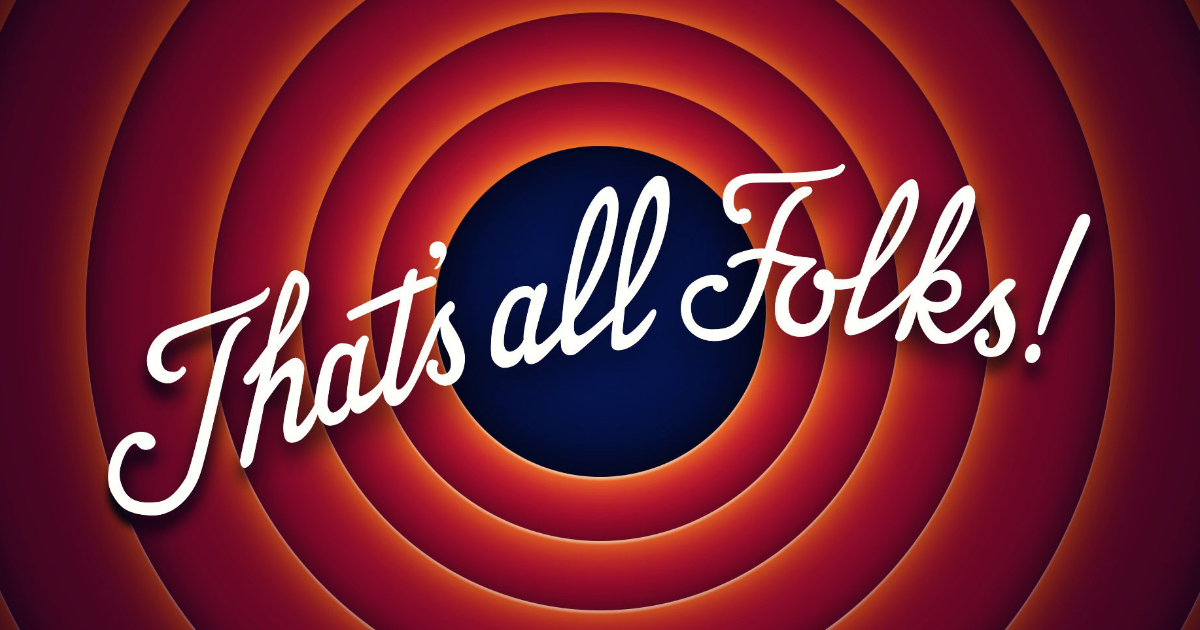
What Is a Conclusion of an Essay: Outline and Purpose
How to write a conclusion paragraph.
- 18 Good Conclusion Paragraph Examples
- Argumentative
Narrative Essay
Effective strategies to conclude an essay, bottom line.
One of the crucial parts of a writing piece is an essay conclusion. it is the last paragraph that creates the final impression from a paper. It is not enough just to summarize what was written in the body part. A writer must make the reader want to continue exploring the problem, share the author’s position, or finally get a clear understanding of an issue . It all depends on the essay type. Our essay writer team has come up with essay conclusion examples and useful tips to help students master the art of concluding an essay logically and effectively. Check them out!
Conclusion is the last paragraph of any academic writing, no matter whether it is a school five paragraph essay or college research paper. It is a compulsory structural part of an essay that gives a sense of closure. The purpose of writing a conclusion is to restate the main idea, summarize the key points discussed in the body of the paper showing how they support or prove your thesis, and draw a general conclusion .
What to write in a conclusion paragraph? A typical conclusion outline has three structural components:
- Restated thesis statement.
- Summary of the key points.
- General conclusion or ideas for broader implications of an issue.
Don’t know how to start essay conclusions? No worries! We have prepared useful tips to help you write a good conclusion for your essay. Follow these simple steps:
- Restate the thesis statement . Start your essay conclusion with reminding readers of the main idea of your paper. However, do not just copy-paste the sentence from the introduction paragraph . You should present the same claim but using different words.
- Summarize the main points . Proceed with analysis and summary the key ideas you have discussed in the body paragraphs. Show how these arguments support and prove your thesis statement.
- Sum up the whole essay . After analyzing the major ideas of the paper, draw up a general essay conclusion. If you do not know how to do it, try answering the So-what?-question. In case you write a conclusion for a research paper, you may be asked to identify the knowledge gap. Also, you may specify broader implications of the issue in the larger context for future research.
18 Good Conclusion Paragraph Examples
We have prepared essay conclusions for different types of papers. Check them out for better understanding of how to write a conclusion.
Argumentative
The purpose of argumentative paper is to take a stand on an issue. Check these argumentative essay conclusion examples to make your essay convincing.
The purpose of this essay type is to persuade the readers. Look through persuasive essay conclusion examples to understand how to write a conclusion that will help you win over the audience.
Critical thinking is required in this essay type. You should be able to analyze the whole piece of writing to create a strong final paragraph. Have a look at these analysis essay conclusion examples to get a general idea.
Wondering how to write a literary analysis ? Check out our guide.
These essays are easy to write. The purpose of the narrative essay conclusion is to sum up everything described and discussed in the essay.
Expository
Expository essays aim to describe or explain ideas, notions, phenomena, etc. to the reader. Such papers require research to support the ideas and be able to provide evidence. Check out a conclusion sample of an expository essay.
Are you assigned to write an exposition? Check our blog post to find out what is an expository essay and how to write it successfully.
Look at the English essay conclusion example below. It may refer to any type of paper.
There exist several most common approaches that allow to conclude an essay logically and reasonably. Here they are.
- So what? This is the most common strategy. It presupposes summing up the paper by giving an answer to a short question So-what?
- Giving a larger context. This strategy mainly applies to the research papers. The main idea is to mention the areas of the issue that need further investigation.
- Rhetorical question . It is a provocative and intriguing question that does not need an answer. It gives readers food for thought. However, such conclusions might be not very effective in academic papers.
Also, we would like to remind you that there are some details that should not be included in the conclusion paragraph. Avoid:
- Retelling what was written in the paper
- Presenting new ideas
- Introducing facts or arguments that contradict the info discussed in the essay
- Adding in-text citations
- Copy-pasting sentences from the intro or body paragraphs
- Using phrases like in conclusion, in summary, to sum up, etc.
Essay conclusion is an essential part of a paper. If you miss it or make it weak, your essay will be incomplete. Thus, try your best to conclude an essay with a strong and balanced final paragraph. It should resonate with the essay introduction and body paragraphs, summarize the whole paper, and be written using parallel sentence structures. Have a close look at conclusion sentence examples to ensure you are able to conclude an essay appropriately. If you have some questions or need help with your essay conclusion, you may ask for writing assistance. Experienced writers will help you write a logical and reasonable essay conclusion.
1. What are the components of a conclusion?
Essay conclusion usually has three main parts. They are: restated thesis statement, summary of the key points, and general conclusion. Make sure you include these parts in the final part to conclude an essay appropriately. Mind that just repeating the thesis and ideas will not work. Show your ability to analyze.
2. How to begin a conclusion?
In the last paragraph synthesize and summarize your paper. A reasonable conclusion starts with reminding readers the main idea of an essay. Make sure to paraphrase your thesis statement. Otherwise, it might seem you don’t really understand the point. Also, avoid starting the paragraph with such words as in conclusion, in summary, to conclude, to sum up, etc. It looks primitive and unprofessional.
It’s time for essay writing but you do not know how to start, what to write about, and how to organize your work? This article will guide you on how to write a 500 word essay fast, will reveal all the essay writing secrets regarding essay structure, writing process as well as give good examples for ...
A topic sentence is an important part of your essay. Its basic function is to help you organize each paragraph by summing up its information in a brief manner to make it easier for readers to grab your point. Use topic sentence examples to write good topic sentences. Without them, your academic pape...
The essay introduction serves as a quick test of your text: if the first paragraph is well-written, the rest of the text may be superb. If you fail with making a good introduction, there’s no matter how exceptional your body and conclusion are because nobody will ever read it. Every essay writer onl...
- Link to facebook
- Link to linkedin
- Link to twitter
- Link to youtube
- Writing Tips
5 Examples of Concluding Words for Essays
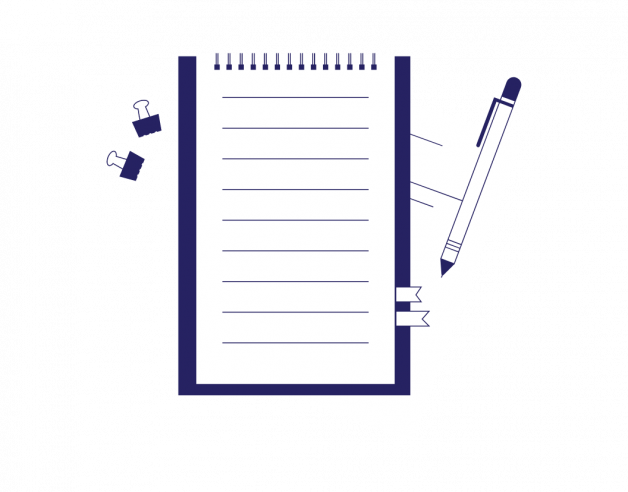
4-minute read
- 19th September 2022
If you’re a student writing an essay or research paper, it’s important to make sure your points flow together well. You’ll want to use connecting words (known formally as transition signals) to do this. Transition signals like thus , also , and furthermore link different ideas, and when you get to the end of your work, you need to use these to mark your conclusion. Read on to learn more about transition signals and how to use them to conclude your essays.
Transition Signals
Transition signals link sentences together cohesively, enabling easy reading and comprehension. They are usually placed at the beginning of a sentence and separated from the remaining words with a comma. There are several types of transition signals, including those to:
● show the order of a sequence of events (e.g., first, then, next)
● introduce an example (e.g., specifically, for instance)
● indicate a contrasting idea (e.g., but, however, although)
● present an additional idea (e.g., also, in addition, plus)
● indicate time (e.g., beforehand, meanwhile, later)
● compare (e.g., likewise, similarly)
● show cause and effect (e.g., thus, as a result)
● mark the conclusion – which we’ll focus on in this guide.
When you reach the end of an essay, you should start the concluding paragraph with a transition signal that acts as a bridge to the summary of your key points. Check out some concluding transition signals below and learn how you can use them in your writing.
To Conclude…
This is a particularly versatile closing statement that can be used for almost any kind of essay, including both formal and informal academic writing. It signals to the reader that you will briefly restate the main idea. As an alternative, you can begin the summary with “to close” or “in conclusion.” In an argumentative piece, you can use this phrase to indicate a call to action or opinion:
To conclude, Abraham Lincoln was the best president because he abolished slavery.
Find this useful?
Subscribe to our newsletter and get writing tips from our editors straight to your inbox.
As Has Been Demonstrated…
To describe how the evidence presented in your essay supports your argument or main idea, begin the concluding paragraph with “as has been demonstrated.” This phrase is best used for research papers or articles with heavy empirical or statistical evidence.
As has been demonstrated by the study presented above, human activities are negatively altering the climate system.
The Above Points Illustrate…
As another transitional phrase for formal or academic work, “the above points illustrate” indicates that you are reiterating your argument and that the conclusion will include an assessment of the evidence you’ve presented.
The above points illustrate that children prefer chocolate over broccoli.
In a Nutshell…
A simple and informal metaphor to begin a conclusion, “in a nutshell” prepares the reader for a summary of your paper. It can work in narratives and speeches but should be avoided in formal situations.
In a nutshell, the Beatles had an impact on musicians for generations to come.
Overall, It Can Be Said…
To recap an idea at the end of a critical or descriptive essay, you can use this phrase at the beginning of the concluding paragraph. “Overall” means “taking everything into account,” and it sums up your essay in a formal way. You can use “overall” on its own as a transition signal, or you can use it as part of a phrase.
Overall, it can be said that art has had a positive impact on humanity.
Proofreading and Editing
Transition signals are crucial to crafting a well-written and cohesive essay. For your next writing assignment, make sure you include plenty of transition signals, and check out this post for more tips on how to improve your writing. And before you turn in your paper, don’t forget to have someone proofread your work. Our expert editors will make sure your essay includes all the transition signals necessary for your writing to flow seamlessly. Send in a free 500-word sample today!
Share this article:
Post A New Comment
Got content that needs a quick turnaround? Let us polish your work. Explore our editorial business services.
3-minute read
What Is a Content Editor?
Are you interested in learning more about the role of a content editor and the...
The Benefits of Using an Online Proofreading Service
Proofreading is important to ensure your writing is clear and concise for your readers. Whether...
2-minute read
6 Online AI Presentation Maker Tools
Creating presentations can be time-consuming and frustrating. Trying to construct a visually appealing and informative...
What Is Market Research?
No matter your industry, conducting market research helps you keep up to date with shifting...
8 Press Release Distribution Services for Your Business
In a world where you need to stand out, press releases are key to being...
How to Get a Patent
In the United States, the US Patent and Trademarks Office issues patents. In the United...

Make sure your writing is the best it can be with our expert English proofreading and editing.
- Translators
- Graphic Designers
- Editing Services
- Academic Editing Services
- Admissions Editing Services
- Admissions Essay Editing Services
- AI Content Editing Services
- APA Style Editing Services
- Application Essay Editing Services
- Book Editing Services
- Business Editing Services
- Capstone Paper Editing Services
- Children's Book Editing Services
- College Application Editing Services
- College Essay Editing Services
- Copy Editing Services
- Developmental Editing Services
- Dissertation Editing Services
- eBook Editing Services
- English Editing Services
- Horror Story Editing Services
- Legal Editing Services
- Line Editing Services
- Manuscript Editing Services
- MLA Style Editing Services
- Novel Editing Services
- Paper Editing Services
- Personal Statement Editing Services
- Research Paper Editing Services
- Résumé Editing Services
- Scientific Editing Services
- Short Story Editing Services
- Statement of Purpose Editing Services
- Substantive Editing Services
- Thesis Editing Services
Proofreading
- Proofreading Services
- Admissions Essay Proofreading Services
- Children's Book Proofreading Services
- Legal Proofreading Services
- Novel Proofreading Services
- Personal Statement Proofreading Services
- Research Proposal Proofreading Services
- Statement of Purpose Proofreading Services
Translation
- Translation Services
Graphic Design
- Graphic Design Services
- Dungeons & Dragons Design Services
- Sticker Design Services
- Writing Services
Please enter the email address you used for your account. Your sign in information will be sent to your email address after it has been verified.
In Summary: 10 Examples of Essay Conclusions

The conclusion of an essay may be the toughest section to write. Think about it; you're really tired at this point. It's probably the night before your paper is due and you just want to be done . So, the temptation is there to simply rush through it, and hope that your teacher is exhausted once she gets to your paper and doesn't bother to read it fully.
But the conclusion is probably the most important part of the paper. It ties everything together up nicely in the end. Not writing a good conclusion would be like if we never found out if Elizabeth and Mr. Darcy got together or if we never knew what that monster was in the Upside Down in "Stranger Things." Though not every ending has to be 100% conclusive (in fact, most endings never are— think the movie Inception ), it does have to have a well-thought out conclusion.
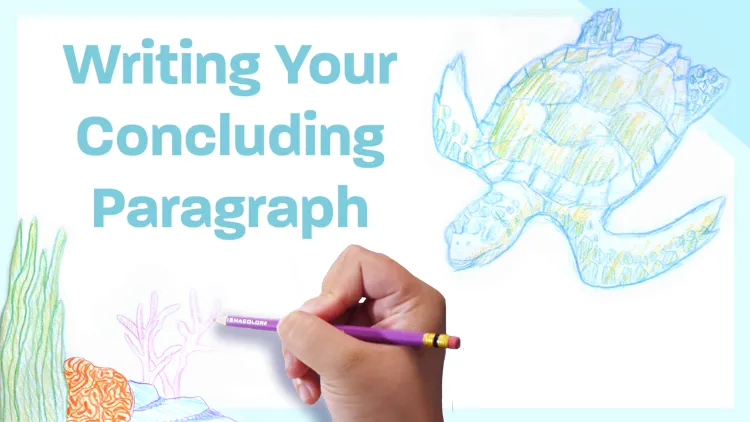
So, how do you write a good conclusion? What are the key components of a solid conclusion? What does a thorough and effective conclusion look like?
Read on for more information about our conclusion on conclusions.
What are the key components of a good conclusion?
Remember that thesis statement which you wrote in the first or second paragraph of your essay? You know, the one where you stated a claim about something? You argued something about a topic and you used the body paragraphs to prove your thesis statement through all of the research that you've performed.
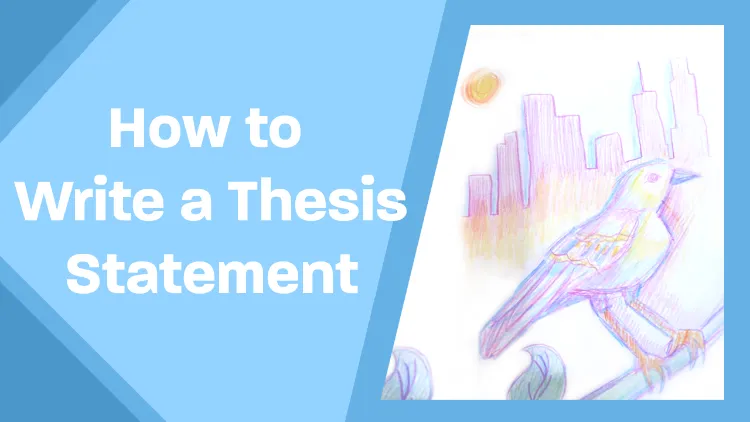
Now that you've fully explained the research and the support for your thesis statement throughout the body of the paper, it's time to come back to that original idea in the conclusion. The conclusion basically asks us to do a few things:
- Restate the main idea of the paper (why you wrote this entire long piece to begin with).
- Summarize all the key points you made throughout the body of the paper (things that proved your thesis statement).
- Write about why this paper and topic are important, and leave the reader with ideas for additional research or maybe some questions that didn't get answered. The idea is that you want to leave the reader with a long-lasting impression. This is your opportunity to really drive your point home and to use some really interesting language.
Okay, so now that we have a game plan of how we need to write a good conclusion and what components consists of, let's look at a few examples of some sample essay conclusions.
Essay conclusion 1 — Why Ross didn't deserve Rachel on "Friends"
Although viewers always expected Ross and Rachel to reunite at the end of the series, the fact remains that Ross didn't deserve Rachel as a partner. As we saw in the beginning of the series, Ross was unfaithful to Rachel when they had been dating for over a year, and he didn't want to admit his wrongdoing when they tried to get back together after their initial breakup. Additionally, Ross was an extremely jealous and demanding partner, yelling at Rachel in front of all of their friends on several occasions. Finally, and most egregiously, Ross had a terrible reaction when Rachel told Ross she was pregnant after Monica and Chandler's wedding, making him an undesirable romantic partner for her, or any other character on the show for that matter. This conclusion is especially apparent after viewing the show more than 10 years after the final episode aired and having a collectively better understanding of women's rights and domestic abuse in relationships.

Essay conclusion 2 — Should students be allowed to have cell phones in elementary school?
In conclusion, although it's easy to see why allowing an elementary school child to have a cell phone would be convenient for after-school pickups or arranging playdates with friends, there is too much evidence to show that it's generally not a good idea. Children already have a lot of access to media (on average over seven hours per day) and it is the parent's responsibility to monitor their media access, which is more difficult if the child has exclusive cell phone access. Cyber bullying, which is increasingly becoming a problem, is also going to be a risk when your child has unlimited access to a smart phone. Clearly, elementary school-aged children are not emotionally mature enough to handle the responsibility of a smart phone, and the borrowing of a parent's cell phone should be highly monitored to ensure safe and healthful usage.
Essay conclusion 3 — Should sexual education be taught in public schools?
It's clear that sexual education is completely vital to the public-school curriculum. Not only does this lead to a better understanding of human development and human sexuality, but awareness and sex education also reduce the rates of teen pregnancy. Studies have shown that comprehensive sexual education increases the age of when teens have sex for the first time. Learning about contraception and how to use contraception correctly ultimately leads to lower rates of STDs. Lastly, comprehensive sex education also teaches students about consensual sex, and will hopefully lead to healthier sexual relationships and lower rates of sexual assault in the future. Not only should sex education be taught in public schools, but it should be mandatory for all public-school systems.
Essay conclusion 4 — What are the biggest challenges for women in the workplace?
Women have outnumbered men on the payroll in nonfarm jobs since 2010, but even with a majority of females in the office, there are still huge challenges for them at work. One of the biggest issues, which has been widely covered and debated on, is the fact that women still earn less of a wage for the same job as their male counterparts. Now that women are the breadwinners of many families, this is stunting economic growth and opportunity for their children. Additionally, women are less likely to be in charge at work. With less than 6% of Fortune 500 companies with a female CEO, women have a steeper hill to climb at the very top echelon of jobs. With a more level playing field, women's opportunities will increase and the workforce will ultimately be more inviting for all.
Essay conclusion 5 — You're having dinner with your favorite author. What happens? Describe the scene.
Harper Lee puts down her cup of coffee on the table, quietly scanning the room for an exit.
I'm nervous, wondering what to say to end this surreal evening.
"Thank you so much for meeting with me. I know that you're a very private person, and I can't tell you how much this means to me."
She smiles slightly at me and waves at the waiter for the check, which he brings promptly.
Essay conclusion 6 — Should music with curse words be allowed at school dances?
Language can be powerful and sometimes even harmful, but censorship of language is one of the worst things we can do as a society. I believe that the content of the song is more important than a few curse words. If a song's content is designed to provoke, intimidate, or make someone feel inferior, then I believe that is more harmful than a few impolite words in a chorus.
Essay conclusion 7 — What is something that should be taught in school that isn't?
Financial literacy is one of the most important things a person needs to understand as a fully functional adult. It's crucial for someone to be able to know how to purchase a car, open a bank account, invest in a 401k plan, and pay back his or her student debt all while being able to balance paying rent and saving money. Financial literacy should be taught to students while they are still in high school so that they can feel prepared to go out on their own and make a positive contribution to society.
Essay conclusion 8 — Is an increased dependence on technology good for society?
Technology surely isn't going anywhere. If anything, we will become more and more dependent on the capabilities of our smartphones and other devices in the future. However, we have to make sure that this dependence on technology isn't making us lazier or less curious about the world around us. With more knowledge available than ever before with today's technology, people are less discerning about what kind of materials they read and whether or not those materials are factual. People are also less likely to make a personal connection with someone while they're out in the world, which can increase levels of depression, anxiety, and stress. Ultimately, we have to learn how to co-exist with technology in a way that is both healthful and constructive.
Essay conclusion 9 — Should schools start later in the morning?
There are some clear benefits to starting school later in the morning for K-12 students such as better academic performance and improved sleeping schedules. Although it might take a bit of rearranging schedules for parents to take their kids to school later on in the day, it's more important that students perform better academically than for the drop-off to be convenient for the parents on their way to work. To combat this, increased bus routes and crossing guards should be implemented so that parents who have to get to work at a certain time can be assured that their kids are making it to school safely.
Essay conclusion 10 — How do video games affect children and teenagers?
Video games have been an integral part of childhood and adolescence for a few decades now, but the effects on aggression levels and exposure to violence may make us take pause on how much exposure parents should let their kids have to these games. The video game industry is growing exponentially, and as the technology and video quality increase so does the ability to separate virtual reality from reality. Games with violent content are known to cause aggressive and sometimes even violent behavior in teens. Many video games, first-person shooter games in particular, have violent content. When the player is rewarded for violent behavior in the game, it reinforces the subtle idea that violence is acceptable and can be used in real life. With busy schedules and easy access to so much media, it's difficult for parents to be able to oversee everything that their children are exposed to. Video game designers should be held accountable for the violent content in their games, and a push should be made for more parental oversight and rules on video game usage.
In conclusion of conclusions
Conclusions are really just about wrapping things up. You want to be as succinct as possible, you want to reiterate the points you've already made throughout the essay, and you want to be compelling. With a little bit of practice and revision, you should be able to get the process down in no time. And if you need help with revising your conclusion or any other part of your paper, be sure to seek out the advice of a trusted teacher or a writing center, or hire one of our professional editors to give you a second opinion on your paper.
Related Posts

Mastering Research Paper Outlines: A Comprehensive Guide

Mastering Research: The Principles of Experimental Design
- Academic Writing Advice
- All Blog Posts
- Writing Advice
- Admissions Writing Advice
- Book Writing Advice
- Short Story Advice
- Employment Writing Advice
- Business Writing Advice
- Web Content Advice
- Article Writing Advice
- Magazine Writing Advice
- Grammar Advice
- Dialect Advice
- Editing Advice
- Freelance Advice
- Legal Writing Advice
- Poetry Advice
- Graphic Design Advice
- Logo Design Advice
- Translation Advice
- Blog Reviews
- Short Story Award Winners
- Scholarship Winners

Need an academic editor before submitting your work?
Questions? Call us:
Email:
- How it works
- Testimonials
Essay Writing
- Essay service
- Essay writers
- College essay service
- Write my essay
- Pay for essay
- Essay topics
Term Paper Writing
- Term paper service
- Buy term papers
- Term paper help
- Term paper writers
- College term papers
- Write my term paper
- Pay for term paper
- Term paper topic
Research Paper Writing
- Research paper service
- Buy research paper
- Research paper help
- Research paper writers
- College research papers
- Write my research paper
- Pay for research paper
- Research paper topics
Dissertation Writing
- Dissertation service
- Buy dissertation
- Dissertation help
- Dissertation writers
- College thesis
- Write my dissertation
- Pay for dissertation
- Dissertation topics
Other Services
- Custom writing services
- Speech writing service
- Movie review writing
- Editing service
- Assignment writing
- Article writing service
- Book report writing
- Book review writing
Popular request:
Concluding sentence: easy writing guide.
January 21, 2021

A concluding sentence should tie up an argument in a paragraph, essay, or paper. Unfortunately, many people make a mistake when writing essays and papers by leaving out this sentence. Others don’t even know what a conclusion sentence is and why it is important, leave alone knowing how to write it. So, let’s start by answering, what is a conclusion sentence?
What is a Concluding Sentence?
Every paragraph has a topic sentence, supporting sentences, and a concluding sentence. But, what’s a concluding sentence? Well, this is the sentence that sums up all the information that has been presented in the paragraph. It tells the readers that you’re getting to the closure of the paragraph.
Essentially, this sentence completes a paragraph while restating the main argument or idea. Conclusion sentence starters include words and phrases like “thus”, “therefore”, “resulting”, “in brief”, “hence”, and “to sum up” are often used to start this sentence.
This sentence summarizes the main argument. It also ties the paragraph without rephrasing or your topic sentence. A concluding sentence in a paragraph wraps up the entire argument while guiding the readers regarding the information that you have provided.
How to Write a Concluding Sentence
The concluding sentence definition may vary. However, this sentence should serve its purpose effectively. To achieve this, you should learn how to write a good concluding sentence. Here is a step-by-step guide on how to write a conclusion sentence.
- Summarize Start by summarizing the paragraph’s content. Remember that this sentence should not introduce anything new to the paragraph. It should recap what you’ve shared with your readers in simple and few words. Essentially, this sentence should wrap up your main points briefly.
- Make your sentence short The concluding sentence words should be few. However, the length of this sentence should depend on the essay or paragraph size. For instance, two lines could be sufficient for a paragraph that has ten lines. Essentially, summarize everything without losing the meaning.
- Provide a closure In addition to summarizing a paragraph, this sentence should provide a solid closure to your readers. The importance of a solid close is less when composing a cliff-hanger only. Readers should feel at ease after reading your paper or essay. They should not be confused by the last sentence. Therefore, make sure that your sentence wraps up everything nicely.
- Read the sentence Learning how to make a concluding sentence alone is not enough. You should also ensure that this sentence serves its purpose. Therefore, check your sentence to ensure that it mentions the chief points. It should provide a sense of summarization to the paragraph by wrapping up and summarizing all the key points. It should also rephrase the thesis statement to enhance understanding. What’s more, it should restate your topic sentence. It should represent all the findings, data, figures, materials, logic, and facts.
When learning how to write concluding sentence, bear in mind that this is a final word on the topic. As such, it should leave readers with a sense of closure or completion. This should be the clincher instead of a summary. The essential points of your write-up should be presented in your essay conclusion. What’s more, this sentence should compel readers to focus on new views regarding the topic. And most importantly, it should end on a positive note.
How to Start a Concluding Sentence
There are many ways of starting this sentence. You can learn about these ways by checking out well written concluding sentence examples. For instance, you can use these concluding sentence starters:
- In conclusion ,
- In general ,
- Therefore ,
To understand how these starters can be used, check these conclusion sentence examples for essays.
Example 1 : In conclusion, marijuana may become recognized as a healing tool one day because it has more than recreational value.
Example 2 : Lastly, the widespread abuse of marijuana and its profitability should compel lawmakers to decriminalize its use in the U.S
Example 3: Therefore, marijuana should be availed to the general public due to its therapeutic benefits.
Example 4 : Clearly, a significant correlation between health risks and marijuana risks that explain why it should be decriminalized exist.
Example 5 : In general, marijuana should be legalized globally because its use is as old as the history of mankind.
The effective use of starters signals the beginning of this paragraph to the readers. It also ensures a smooth transition from the explanation of the main points to the end of the paragraph.
Concluding Sentence Transitions
You’ve probably read a good concluding sentence example and come across what seems like a transition word. Well, some of these sentences start with transition words. Here are examples of such transitions:
- In other words ,
- All in all ,
A writer can also include their final thought. This is very common in write-ups that do not provide a chance for writers to interject their opinion. Here is a concluding sentence essay sample that includes the final thought and a concluding statement.
In short, you can gain both stamina and muscle by following these steps though all exercise programs take time to achieve the desired results.
In this example, the writer starts the sentence with a transition, then moves on to the concluding statement before giving their opinion about the program’s results.
Useful Tips and Insights
In addition to using conclusion sentence examples, follow these tips:
- Add a summary – Include a summary of your essay or paper in the sentence to serve as the crux of your writing. Your final thought or judgment should be supported by the summary of the main point in this sentence.
- Call for action – This sentence should call readers to take action using an emotional and factual argument to evoke the desired response from the readers.
- Evoke a certain image – Make sure that your sentence has an impact on the readers by painting a vivid picture. You should convey your ideas and transfer your mental image into the mind of the readers.
- Make suggestions – Recommend beneficial changes to the surrounding and the audience.
- Add quotations – Starting or ending your paper or essay with a quotation can create a good impression. It can also leave a lasting effect on the reader. Therefore, consider using a quotation in your conclusion.
By reading a good conclusion sentence example, you will see how the author restates their thesis or topic sentence using the right synonyms. You will also learn to wrap up the paragraph with the right words. What’s more, a good example will show you the best way to use starters and transition words to signal the beginning of this paragraph.
The purpose of the last sentence in a paragraph is to remind the audience about the discussed topic. It also sums up all the information provided in that paragraph. Although you can use a concluding sentence generator, you should learn and practice writing it. This will enable you to give every paragraph that you write a great sense of completion or closure. Writing services may also come in handy here. In short, your readers will feel that you addressed the main point to its conclusion.

Take a break from writing.
Top academic experts are here for you.
- How To Write An Autobiography Guideline And Useful Advice
- 182 Best Classification Essay Topics To Learn And Write About
- How To Manage Stress In College: Top Practical Tips
- How To Write A Narrative Essay: Definition, Tips, And A Step-by-Step Guide
- How To Write Article Review Like Professional
- Great Problem Solution Essay Topics
- Creating Best Stanford Roommate Essay
- Costco Essay – Best Writing Guide
- How To Quote A Dialogue
- Wonderful Expository Essay Topics
- Research Paper Topics For 2020
- Interesting Persuasive Essay Topics
- PRO Courses Guides New Tech Help Pro Expert Videos About wikiHow Pro Upgrade Sign In
- EDIT Edit this Article
- EXPLORE Tech Help Pro About Us Random Article Quizzes Request a New Article Community Dashboard This Or That Game Popular Categories Arts and Entertainment Artwork Books Movies Computers and Electronics Computers Phone Skills Technology Hacks Health Men's Health Mental Health Women's Health Relationships Dating Love Relationship Issues Hobbies and Crafts Crafts Drawing Games Education & Communication Communication Skills Personal Development Studying Personal Care and Style Fashion Hair Care Personal Hygiene Youth Personal Care School Stuff Dating All Categories Arts and Entertainment Finance and Business Home and Garden Relationship Quizzes Cars & Other Vehicles Food and Entertaining Personal Care and Style Sports and Fitness Computers and Electronics Health Pets and Animals Travel Education & Communication Hobbies and Crafts Philosophy and Religion Work World Family Life Holidays and Traditions Relationships Youth
- Browse Articles
- Learn Something New
- Quizzes Hot
- This Or That Game New
- Train Your Brain
- Explore More
- Support wikiHow
- About wikiHow
- Log in / Sign up
- Education and Communications
- English Grammar
- Writing Paragraphs
How to Conclude a Paragraph
Last Updated: December 13, 2023 Fact Checked
This article was co-authored by Diane Stubbs and by wikiHow staff writer, Danielle Blinka, MA, MPA . Diane Stubbs is a Secondary English Teacher with over 22 years of experience teaching all high school grade levels and AP courses. She specializes in secondary education, classroom management, and educational technology. Diane earned a Bachelor of Arts in English from the University of Delaware and a Master of Education from Wesley College. There are 11 references cited in this article, which can be found at the bottom of the page. This article has been fact-checked, ensuring the accuracy of any cited facts and confirming the authority of its sources. This article has been viewed 111,277 times.
If you want a body paragraph to be effective, you need to conclude it properly — a closing sentence is as imperative as a conclusion is to an essay or a research paper. Closing or concluding sentences act like a concluding paragraph in an essay and review the points you made in the paragraph. To effectively conclude a paragraph, restate your topic sentence and include what you taught the reader. Tailor the sentence to the type of essay you’re writing, whether it’s a persuasive or compare and contrast essay.
Reviewing Your Paragraph

- Focus on what you lay out in the topic sentence.
- Note your evidence and details.

- If your topic sentence reads, “Cats may be small, but they’re mighty predators,” then your main idea is that cats are big hunters.
- Your concluding statement should show how your paragraph supported the idea that cats are big predators. For example, a closing statement might read, “Based on these statistics, cats are predators who hunt frequently and decrease the area bird population.”

- For example, the closing statement above, “Based on these statistics, cats are predators who hunt frequently and decrease the area bird population,” reminds the reader that the paragraph just provided statistics about how often cats hunt and how they impact the local bird population. These details support the main idea, and the writer has mentioned both.
Drafting a Closing Statement

- Consequently
- As a result

- An example topic sentence might read: “Cats are natural predators because they enjoy hunting and will even hunt for sport.”
- Your concluding statement for this paragraph might read: “As a result of their continued hunts even after they’re domesticated and provided cat food, cats are proven to be natural predators.”

- As an example, “The data shows that cats hunt even when they have steady meals, which proves that they are natural hunters.”

- For example, “As the data shows, feral cats hunt 140% more than domestic cats.”

- For example, “Consequently, homes that own cats have fewer birds living in their yards.”

- For example, “In the end, cats hunt out of instinct.”

- For example, “To conclude, feral cats are more dangerous to birds than house cats because they have more hunting opportunities and kill more birds each year on average.” This sentence supports the main idea that feral cats hunt more than house cats and shows how the two details provided in the sentence link back to the topic sentence.

- For example, your closing statement could read, “In summation, statistics show that cats who wear bell collars are less of a threat to birds because they kill fewer birds even if they have the same number of hunting opportunities.” This signals to the reader that the writer has finished with one main idea and is moving onto another in a new paragraph.
Avoiding Common Errors

- You also want to avoid the word “you.” For example, don’t say, “As you can see” in your concluding sentence.
- There are some exceptions, such as if you’re writing an introductory paragraph or an opinion essay.

- Reread your concluding statement, then compare it to your paragraph. Do you reference one detail but not another? If it does, rewrite the sentence to address the main points, not the subpoints.

- A poor closing statement might read: “As you can see, the evidence suggests that cats like to hunt."
- A better closing statement could read: “Based on the data, cats look for opportunities to hunt for sport, proving they are natural predators."
Expert Q&A

- In some cases, the concluding statements in introductions and conclusions may have a slightly different format. Thanks Helpful 0 Not Helpful 0
- Remember that your goal is to show the reader your ideas. Thanks Helpful 0 Not Helpful 0
- Focus on your main idea. Thanks Helpful 0 Not Helpful 0

- Try to avoid sounding redundant. Thanks Helpful 2 Not Helpful 0
- Don’t just restate your topic sentence. Show how the details you’ve provided contribute to the main idea. Thanks Helpful 3 Not Helpful 1
You Might Also Like

- ↑ https://writingcenter.unc.edu/tips-and-tools/editing-and-proofreading/
- ↑ https://writingcenter.unc.edu/tips-and-tools/paragraphs/
- ↑ https://openoregon.pressbooks.pub/wrd/chapter/writing-summaries/
- ↑ https://writingcenter.unc.edu/tips-and-tools/transitions/
- ↑ https://lsa.umich.edu/sweetland/undergraduates/writing-guides/how-do-i-write-an-intro--conclusion----body-paragraph.html
- ↑ https://owl.purdue.edu/owl/general_writing/academic_writing/essay_writing/argumentative_essays.html
- ↑ https://owl.excelsior.edu/rhetorical-styles/compare-and-contrast-essay/
- ↑ https://owl.excelsior.edu/rhetorical-styles/cause-and-effect-essay/
- ↑ https://www.grammarly.com/blog/how-to-write-an-informative-essay/
- ↑ https://wts.indiana.edu/writing-guides/paragraphs-and-topic-sentences.html
- ↑ https://libguides.usc.edu/writingguide/conclusion
About This Article

- Send fan mail to authors
Did this article help you?

Featured Articles

Trending Articles

Watch Articles

- Terms of Use
- Privacy Policy
- Do Not Sell or Share My Info
- Not Selling Info
Get all the best how-tos!
Sign up for wikiHow's weekly email newsletter
- Words with Friends Cheat
- Wordle Solver
- Word Unscrambler
- Scrabble Dictionary
- Anagram Solver
- Wordscapes Answers
Make Our Dictionary Yours
Sign up for our weekly newsletters and get:
- Grammar and writing tips
- Fun language articles
- #WordOfTheDay and quizzes
By signing in, you agree to our Terms and Conditions and Privacy Policy .
We'll see you in your inbox soon.
Good Conclusion Starters for Final Paragraphs

- DESCRIPTION Laptop Icon With Good Conclusion Starters Examples
- SOURCE redchocolatte / iStock / Getty Images Plus
- PERMISSION Used under Getty Images license
The way you end a work of writing is just as important as the hook you use to capture readers’ attention and the content in between. The concluding paragraph or section of your paper should begin with words telling readers that the content is drawing to a close. Review some examples of good conclusion sentence starters so you’ll be able to craft appropriate endings of your own.
Characteristics of Effective Conclusion Starters
When it’s time to bring your work to an end, it’s important to sum up the key points or concepts rather than simply stopping abruptly. Conclusion starters are transitional phrases that let readers know they have reached the final part of a document. Conclusion starters should:
- be just a few words that introduce the first sentence of the final paragraph or brief concluding section
- let readers know that they have reached the beginning of the final section
- make readers aware that what they’re about to read won’t provide new information
- set readers expectations for how the work will be drawn to a close (such as a summary of main points, statement of need for additional research, or call to action)
Conclusion Starter Ideas for Essays and Speeches
Whether you’re a student in college, high school or middle school, chances are that you will be assigned to write quite a few essays and deliver many speeches or presentations. When deciding how to end an essay or a speech, you’ll need to choose a conclusion starter that’s appropriate for the overall tone .
Examples of conclusion paragraph starter words and phrases include:
- all things considered
- given these points
- I feel we have no choice but to conclude
- in conclusion
- in drawing to a close
- in light of this information
- in my opinion
- in the final analysis
- nevertheless
- now that you know
- the logical conclusion seems to be
- to summarize
- upon considering all the facts
- upon exploring the situation from multiple perspectives
- what else can we conclude but that
- what other conclusion can we draw from
- when considered from the perspective of
- when faced with the question of
- with all this in mind
Sample Conclusion Starters for Research Papers
Since a research paper’s focus is on presenting the findings of a particular study, the conclusion usually focuses on major findings and their implications. For academic research papers , it is generally expected that the paper will end with a call for additional research in the form of further study of a similar topic or to explore a related research question . The tone should be formal, taking into account the extent to which readers would be expected to have advanced knowledge of the subject matter.
Phrases you might use to start your research paper conclusion include:
- as a result
- as expected, the results indicate
- as indicated by the data
- based on the evidence presented
- based on the results of this study, it seems
- based on what is known at this point in time
- data seem to indicate
- in light of these results
- in the context of x , it seems that
- surprisingly, the data revealed
- the data clearly indicate
- the data reveal
- the major revelation from this study is
- the results of this study demonstrate
- the results of this study seem to indicate
- to extrapolate from the data
- upon analyzing the data
- upon review of these findings
- what this study reveals is
- what we now know is
- while additional research is needed
- while further study is warranted
- while these results seem to indicate
- with results like these, it seems
Less Formal Conclusion Starter Examples
Some writing is much less formal than a research paper or school assignment, or you may even get assigned to write an informal essay that calls for more of a personal touch than an academic tone. In such cases, you may want to opt for a conclusion starter with a more laid-back, conversational tone like these examples.
- after all has been said and done
- as I see things
- at the end of the day
- beyond a shadow of a doubt
- in a nutshell
- in case you’ve wondered
- in simple terms
- my personal take on
- on the whole
- the time has come
- to cut a long story short
- to cut to the chase
- to get to the heart of the matter
- to plainly state the facts
- to wrap this up
- what are we to think about
- what I believe to be true
- what it boils down to
- what I think is
- when all is said and done
- who knew that
- without all the mumbo jumbo
Build Your Conclusion Writing Expertise
Writing good conclusions is certainly an important skill for all writers to have, from students to those who write or do public speaking for a living (and all writers in between). Now that you have some ideas of good conclusion starters, focus on how to write a conclusion in full. Begin by exploring some conclusion examples .
- Conjunctions
- Prepositions
CLOSING in a Sentence Examples: 21 Ways to Use Closing
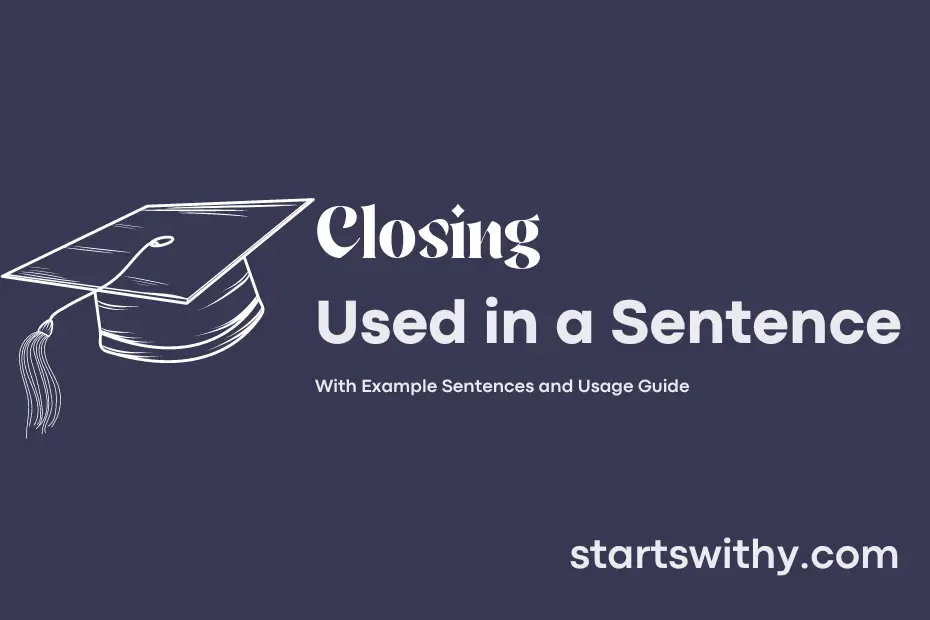
Closing sentences provide a succinct conclusion that effectively wraps up an idea or argument in written communication. This final statement serves to reinforce the main points discussed and leaves a lasting impression on the reader.
Crafting a strong closing sentence is essential for enhancing the overall impact of your writing, whether it be an essay, report, or email. A well-crafted closing sentence can leave a powerful final thought that resonates with the reader and reinforces the purpose of the communication.
Table of Contents
7 Examples Of Closing Used In a Sentence For Kids
- Tomorrow is a holiday, so we are closing school early.
- Please pack up your toys, it’s time for closing playtime.
- Let’s say a prayer before closing our eyes to go to sleep.
- It’s time for closing the storybook and going to bed.
- The sun is closing its eyes for the night – it’s getting dark.
- We are closing the classroom door now, so no more noise outside.
- Closing time for the zoo, all the animals are going to sleep.
14 Sentences with Closing Examples
- Remember to submit your assignment before the closing date to avoid any penalties.
- The library will be closing early tomorrow for maintenance work.
- Don’t forget to double-check your exam timetable for the closing time of each paper.
- The college administration has issued a statement regarding the closing of campus due to a sudden weather alert.
- Make sure to save your progress before closing the software to prevent any data loss.
- The closing ceremony for the college fest will feature a special performance by a renowned artist.
- The student council elections have reached the closing stage, and results will be announced soon.
- The closing remarks of the professor left a lasting impact on the students attending the lecture.
- The semester is quickly closing in, so start preparing for your final exams well in advance.
- The closing credits of the documentary highlighted the contributions of various researchers in the field.
- The college authorities have extended the closing time for hostel entry during exam week.
- The event organizers announced the closing timings for the cultural fest to ensure the safety of all attendees.
- The student union is planning a closing ceremony to celebrate the successful completion of another academic year.
- Remember to clear all dues before the closing date to avoid any issues with your registration for the upcoming semester.
How To Use Closing in Sentences?
To use the word Closing in a sentence, it is important to understand its meaning and context. Closing is a term that refers to the final part of something, such as a speech, a deal, or a ceremony. Here is a guide on how to effectively integrate Closing into a sentence:
Identify the appropriate moment to use Closing in your sentence. Make sure it is being used in the context of concluding or finishing something.
Start your sentence with a transition word or phrase that indicates you are moving towards the end of a discussion or event. For example, you can use words like “In Closing ,” “To sum up,” or “Finally,” before introducing Closing .
Clearly state the main idea or point you want to convey in your Closing sentence. This can be a summary of key points, a closing remark, or a call to action.
Keep your Closing sentence concise and impactful. Avoid introducing new information or ideas that may distract from the main message you want to leave with your audience.
End your sentence with a strong closing statement that leaves a lasting impression on your audience. This can be a thought-provoking reflection, a call to action, or a memorable quote.
By following these steps, you can effectively incorporate Closing into your sentences to create a sense of completion and leave a lasting impact on your audience.
In conclusion, the ability to craft effective sentences with closing statements is essential for ensuring clear communication and leaving a lasting impact on the audience. A well-crafted closing sentence serves to summarize key points, provide a sense of closure, and leave a memorable impression on the reader or listener. Whether it is in a speech, essay, email, or any other form of communication, a strong closing sentence can enhance the overall effectiveness of the message and reinforce the main idea.
By using closing statements strategically, individuals can effectively convey their thoughts, persuade others, and create a sense of unity and completion within their written or spoken work. It is important to consider the tone, content, and purpose of the communication when crafting a closing sentence to ensure that it effectively wraps up the message and drives home the intended point.
Related Posts

In Front or Infront: Which Is the Correct Spelling?
As an expert blogger with years of experience, I’ve delved… Read More » In Front or Infront: Which Is the Correct Spelling?

Targeted vs. Targetted: Correct Spelling Explained in English (US) Usage
Are you unsure about whether to use “targetted” or “targeted”?… Read More » Targeted vs. Targetted: Correct Spelling Explained in English (US) Usage

As per Request or As per Requested: Understanding the Correct Usage
Having worked in various office environments, I’ve often pondered the… Read More » As per Request or As per Requested: Understanding the Correct Usage

Closing Sentence
When it comes to effective writing, a well-crafted closing sentence can make all the difference. Whether you’re delivering a speech, drafting an email, or composing an essay, the closing sentence acts as the final impression on your audience. It summarizes your main points, leaves a lasting impact, and ties everything together. In this article, we will explore the definition of a closing sentence, provide a step-by-step guide on how to write one, address frequently asked questions, and offer creative tips to ensure your closing sentences captivate your readers. So, let’s dive in and discover the art of crafting compelling closing sentences!
1. Topic and Concluding Sentences Reference Sheet
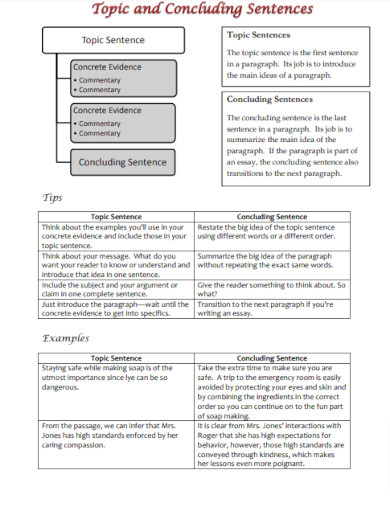
Size: 237 KB
2. Topic and Concluding Sentences Example

Size: 159 KB
3. Simple Closing Sentence Example
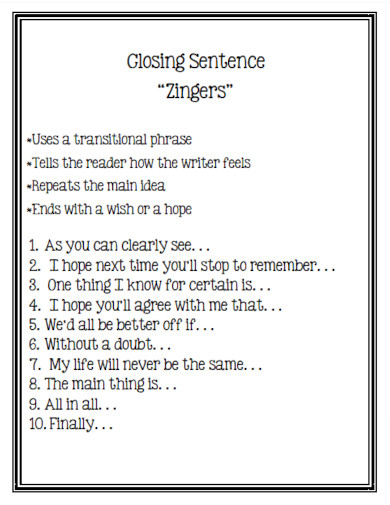
Size: 100 KB
4. Supporting and Concluding Sentences

5. Effective Closing Sentence Example
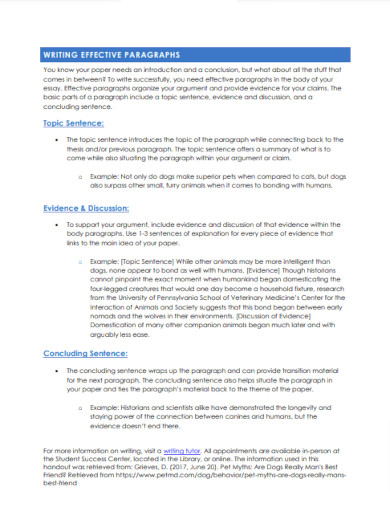
Size: 267 KB
6. Sample Closing Topic Sentences Example
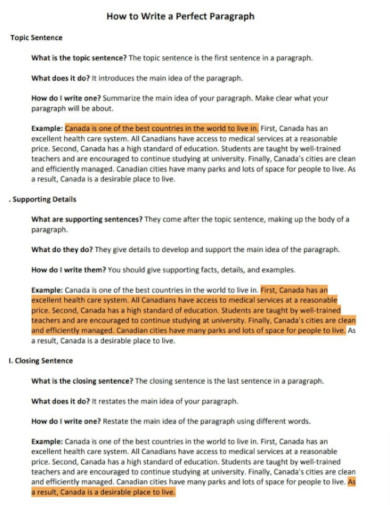
Size: 150 KB
7. Sample Concluding Paragraph for Response to Literature Essay

Size: 58 KB
8. Opening and Closing Paragraphs Example
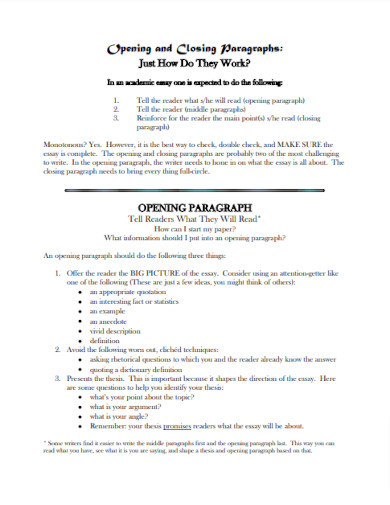
Size: 48 KB
9. Paragraph Essay Diagram with Organizer
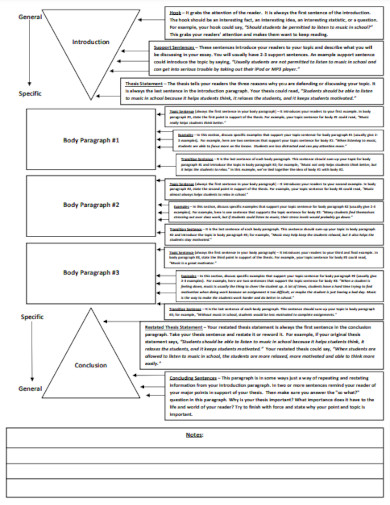
Size: 46 KB
10. Sentence Conclusion Example
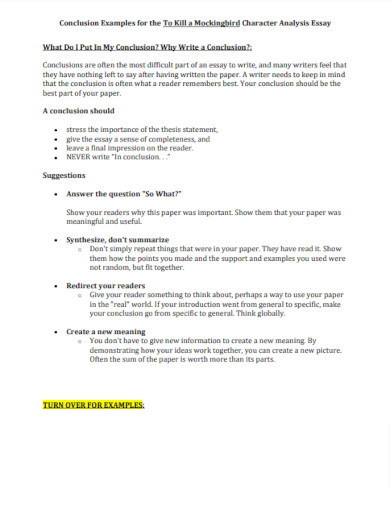
Size: 248 KB
11. Printable Writing a Conclusion Example
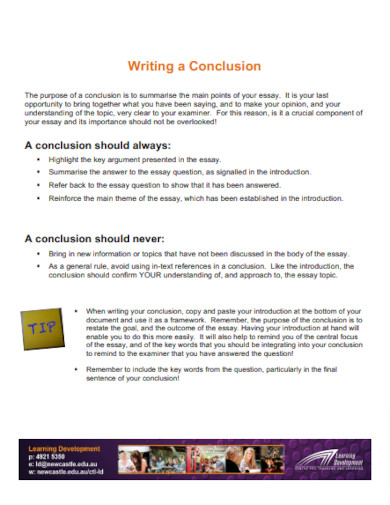
12. Transition Sentences Handout Example
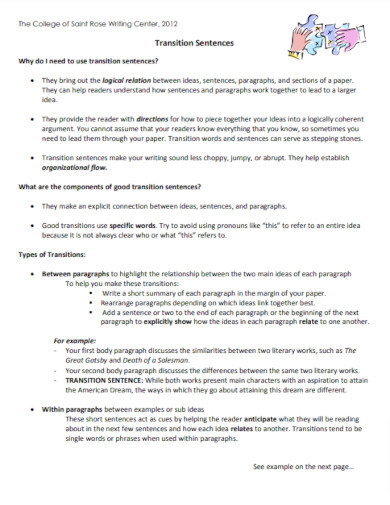
Size: 574 KB
13. How to Write a Perfect Paragraph Example
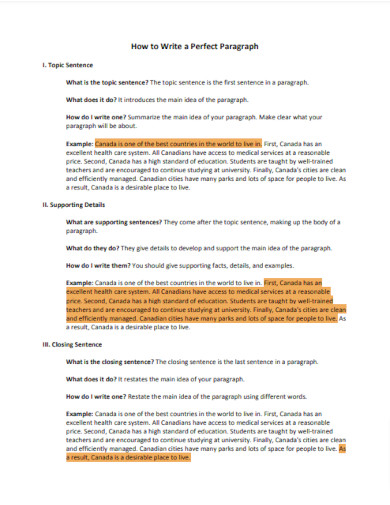
Size: 126 KB
14. Writing Conclusion Paragraphs in a Science Lab Report
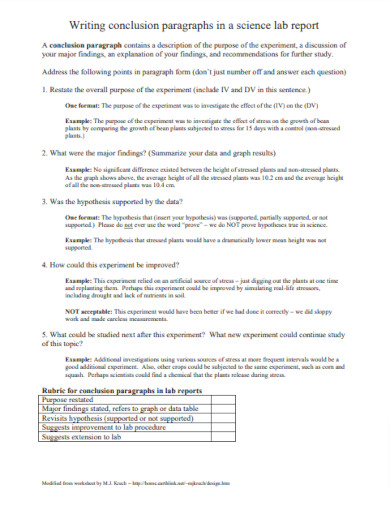
Size: 160 KB
15. Editable Closing Paragraph Structure
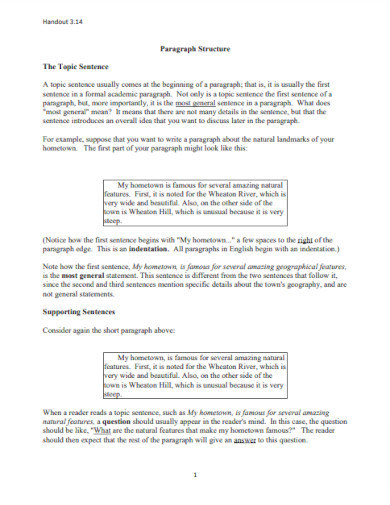
Size: 107 KB
16. Conclusion Section for Research Papers
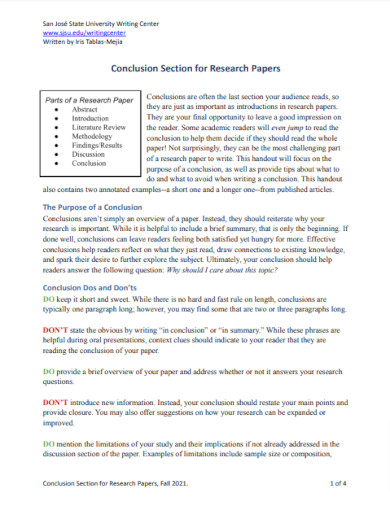
Size: 140 KB
17. Basic Paragraph Writing Example
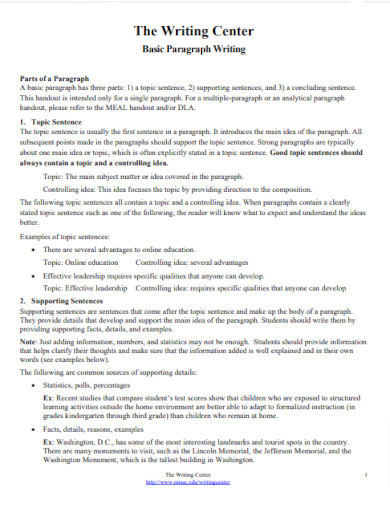
Size: 216 KB
18. Strategies for Writing a Conclusion
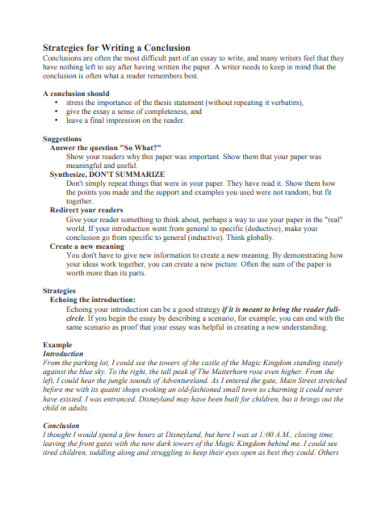
Size: 114 KB
19. Example Five-Paragraph Conclusion Essay Example
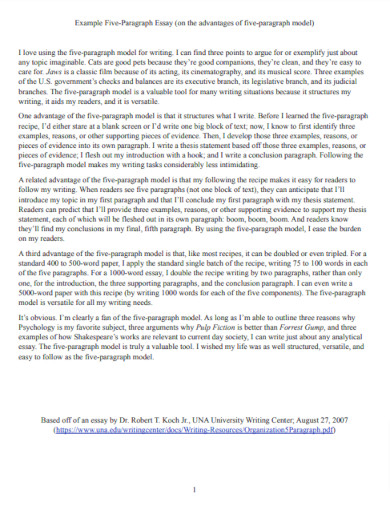
Size: 103 KB
20. Expository Essay Concluding Paragraph
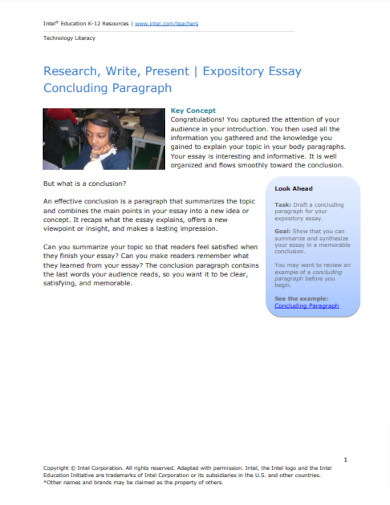
21. Writing the Introduction and Conclusion Paragraphs
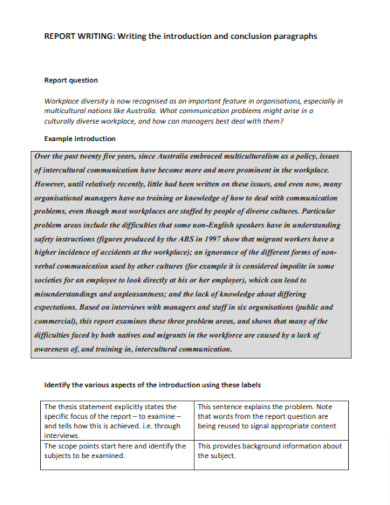
Size: 199 KB
22. Standard Conclusion Sentence Example

Size: 44 KB
23. Ways to Conclude an Essay Example

Size: 64 KB
24. Writing an Effective Conclusion Example
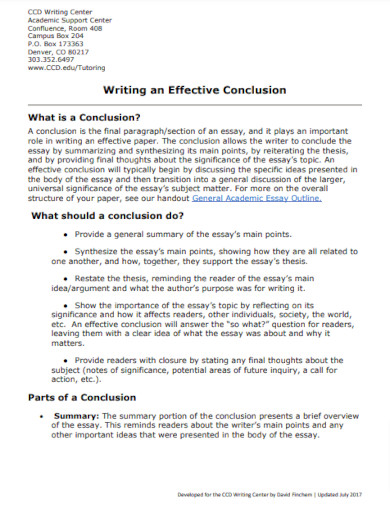
25. Writing Conclusion the Lasting Impression
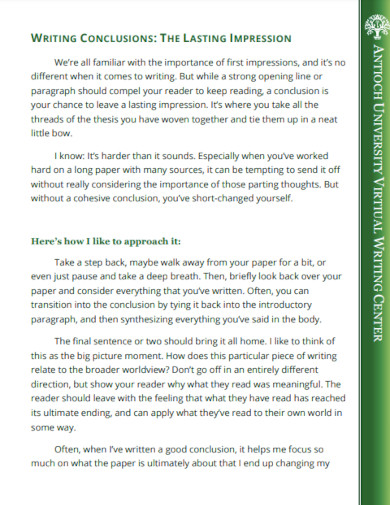
26. Modern Concluding Sentences Example
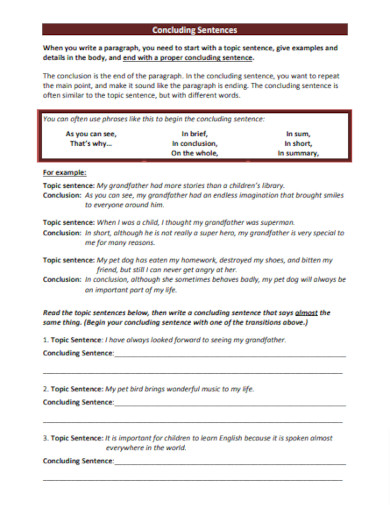
Size: 55 KB
27. Examples of Concluding Sentence Starters
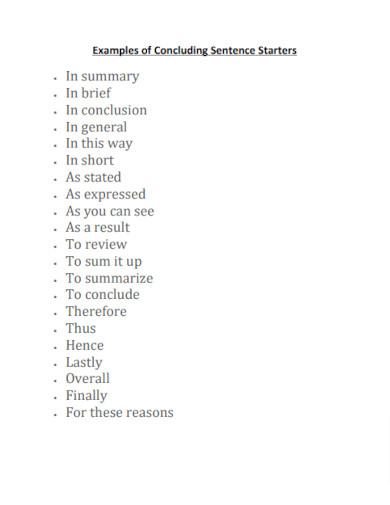
Size: 80 KB
What is a Closing Sentence?
A closing sentence, as its name suggests, serves as the concluding statement in a piece of writing. It is the final sentence or two that brings the text to a meaningful end. This sentence plays a crucial role in summarizing the main ideas or arguments discussed throughout the piece and leaving a lasting impact on the reader. The closing sentence wraps up the content, provides closure, and reinforces the key message of the writing. It is an essential element of text structure , offering a clear signal to the audience that the piece is concluding.
How to write a Closing Sentence?
Crafting an effective closing sentence requires careful consideration and thoughtfulness. Follow this step-by-step guide to ensure your closing sentence leaves a lasting impression:
Step 1: Revisit your main points:
Begin by reviewing the key ideas or arguments presented in your writing. This step will help you summarize the core message you want to convey.
Step 2: Choose the right tone:
Consider the overall tone of your writing. Decide whether you want your closing sentence to be reflective, motivational, thought-provoking, or encouraging. Align the tone with the purpose and context of your writing.
Step 3: Reinforce your message:
Craft a sentence that reinforces your main message. You can restate your thesis or key points in a concise and impactful manner.
Step 4: Create a sense of completion:
Give your readers a sense of closure by wrapping up the ideas discussed. Use phrases like “In conclusion,” “To sum up,” or “In summary” to signal the end of your piece.
Step 5: Leave a lasting impression:
Consider using a memorable phrase, a call to action, or a thought-provoking question to leave a strong impact on your readers.
Where can I find examples of closing sentences for school election speeches?
You can find examples of closing sentences for school election speeches in the article “ 7+ School Election Speech Examples .”
Is there any informative essay outline examples available in PDF format?
Yes, you can check out the article “ 6+ Informative Essay Outline Examples in PDF ” to find various informative essay outline examples.
Where can I find examples of email announcements?
To access examples of email announcements, you can read about “ 10+ Email Announcement Examples .”
In conclusion , mastering the art of crafting closing sentences is an invaluable skill for any writer or speaker. It allows you to leave a lasting impression, summarize your main points, and create a sense of closure. By using the step-by-step guide provided and considering the tone, message, and impact you wish to create, you can write closing sentences that engage, inspire, and captivate your audience. So, whether you’re preparing a school election speech, an informative essay, or a professional email, remember the power of a well-crafted closing sentence and let your words leave a lasting mark.
AI Generator
Text prompt
- Instructive
- Professional
10 Examples of Public speaking
20 Examples of Gas lighting

IMAGES
VIDEO
COMMENTS
Essay Conclusion Examples. Below is a range of copy-and-paste essay conclusions with gaps for you to fill-in your topic and key arguments. Browse through for one you like (there are 17 for argumentative, expository, compare and contrast, and critical essays). Once you've found one you like, copy it and add-in the key points to make it your ...
Step 1: Return to your thesis. To begin your conclusion, signal that the essay is coming to an end by returning to your overall argument. Don't just repeat your thesis statement —instead, try to rephrase your argument in a way that shows how it has been developed since the introduction. Example: Returning to the thesis.
Finally, some advice on how not to end an essay: Don't simply summarize your essay. A brief summary of your argument may be useful, especially if your essay is long--more than ten pages or so. But shorter essays tend not to require a restatement of your main ideas. Avoid phrases like "in conclusion," "to conclude," "in summary," and "to sum up ...
Restate your thesis: remind readers of your main point. Reiterate your supporting points: remind readers of your evidence or arguments. Wrap everything up by tying it all together. Write a clincher: with the last sentence, leave your reader with something to think about. For many, the conclusion is the most dreaded part of essay writing.
Expository Essay Conclusion Examples Topic #5: Explain how to write an essay conclusion. Essay conclusions are pretty simple once you know the framework. It all boils down to three main parts: a transition from the last body paragraph, a summary of the thesis statement and main points of the essay, and a closing statement that wraps everything up.
Highlight the "so what". At the beginning of your paper, you explain to your readers what's at stake—why they should care about the argument you're making. In your conclusion, you can bring readers back to those stakes by reminding them why your argument is important in the first place. You can also draft a few sentences that put ...
These three key elements make up a perfect essay conclusion. Now, to give you an even better idea of how to create a perfect conclusion, let us give you a sample conclusion paragraph outline with examples from an argumentative essay on the topic of "Every Child Should Own a Pet: Sentence 1: Starter.
End your essay with a call to action, warning, or image to make your argument meaningful. Keep your conclusion concise and to the point, so you don't lose a reader's attention. Do your best to avoid adding new information to your conclusion and only emphasize points you've already made in your essay. Method 1.
Table of contents. Endings to avoid. Option 1: Return to the beginning. Option 2: Look forward. Option 3: Reveal your main point. Option 4: End on an action. Other interesting articles. Frequently asked questions about college application essays.
The conclusion pushes beyond the boundaries of the prompt and allows you to consider broader issues, make new connections, and elaborate on the significance of your findings. Your conclusion should make your readers glad they read your paper. Your conclusion gives your reader something to take away that will help them see things differently or ...
Once you're through, scrap the trite word or phrase you opened your conclusion with as well as the rest of the sentence and see how that works. 3. Stating hopes of acceptance. It's no secret that you submitted a college application essay because it's one of the various admissions requirements.
The conclusion is a very important part of your essay. Although it is sometimes treated as a roundup of all of the bits that didn't fit into the paper earlier, it deserves better treatment than that! It's the last thing the reader will see, so it tends to stick in the reader's memory. It's also a great place to remind the reader exactly why ...
Also read: How to Write a Thesis Statement. 2. Tying together the main points. Tying together all the main points of your essay does not mean simply summarizing them in an arbitrary manner. The key is to link each of your main essay points in a coherent structure. One point should follow the other in a logical format.
Follow these simple steps: Restate the thesis statement. Start your essay conclusion with reminding readers of the main idea of your paper. However, do not just copy-paste the sentence from the introduction paragraph. You should present the same claim but using different words. Summarize the main points.
Overall, It Can Be Said…. To recap an idea at the end of a critical or descriptive essay, you can use this phrase at the beginning of the concluding paragraph. "Overall" means "taking everything into account," and it sums up your essay in a formal way. You can use "overall" on its own as a transition signal, or you can use it as ...
Essay conclusion 1 — Why Ross didn't deserve Rachel on "Friends". Although viewers always expected Ross and Rachel to reunite at the end of the series, the fact remains that Ross didn't deserve Rachel as a partner. As we saw in the beginning of the series, Ross was unfaithful to Rachel when they had been dating for over a year, and he didn't ...
See how to write a good conclusion for a project, essay or paper to get the grade. Strong conclusion examples pave the way for the perfect paper ending. See how to write a good conclusion for a project, essay or paper to get the grade. ... It could end up being the five or so sentences that a reader carries with them forever.
A compelling example of an essay conclusion sentence is: "Ultimately, the courage and resilience displayed by the protagonist serve as a beacon of hope, illuminating the universal human capacity for growth and transformation.". This sentence not only summarizes the key points of the essay but also leaves the reader with something to ponder.
To understand how these starters can be used, check these conclusion sentence examples for essays. Example 1: In conclusion, marijuana may become recognized as a healing tool one day because it has more than recreational value. Example 2: Lastly, the widespread abuse of marijuana and its profitability should compel lawmakers to decriminalize ...
1. Avoid using the words "I" or "my" in your closing statement. Many writers are tempted to conclude their paragraphs using statements that begin with "As I have shown" or "This shows my assertions are correct.". Keep your essay in the formal third-person, which will make your ideas more convincing.
If you're looking for good conclusion starters to finish your piece strongly, look no further. Find examples of great ways to begin your conclusion here.
7 Examples Of Closing Used In a Sentence For Kids. Tomorrow is a holiday, so we are closing school early. Please pack up your toys, it's time for closing playtime. Let's say a prayer before closing our eyes to go to sleep. It's time for closing the storybook and going to bed. The sun is closing its eyes for the night - it's getting dark.
In conclusion, mastering the art of crafting closing sentences is an invaluable skill for any writer or speaker.It allows you to leave a lasting impression, summarize your main points, and create a sense of closure. By using the step-by-step guide provided and considering the tone, message, and impact you wish to create, you can write closing sentences that engage, inspire, and captivate your ...
1-) Introduction. While determining the outline of your essay, you must first prepare the introduction section. An introduction section usually starts with a hook sentence that will draw the reader to your topic and accounts for 10% of your total essay word count. Then, you should give the reader context about your topic in a few sentences.